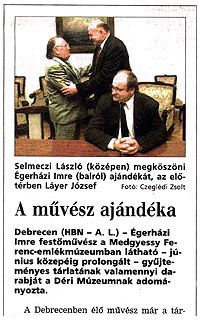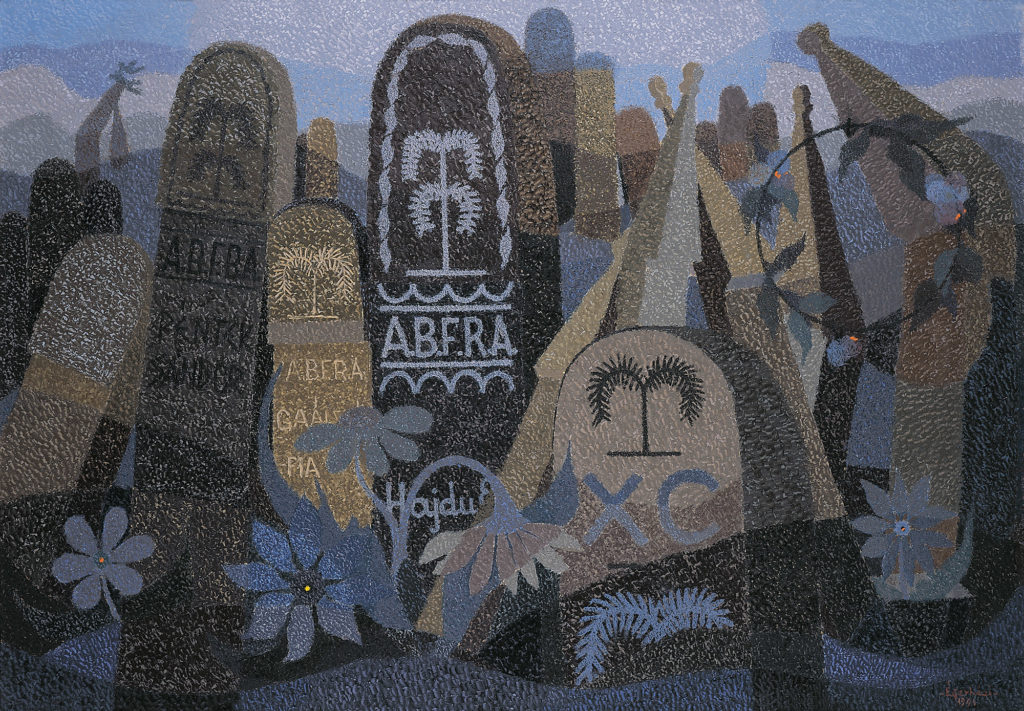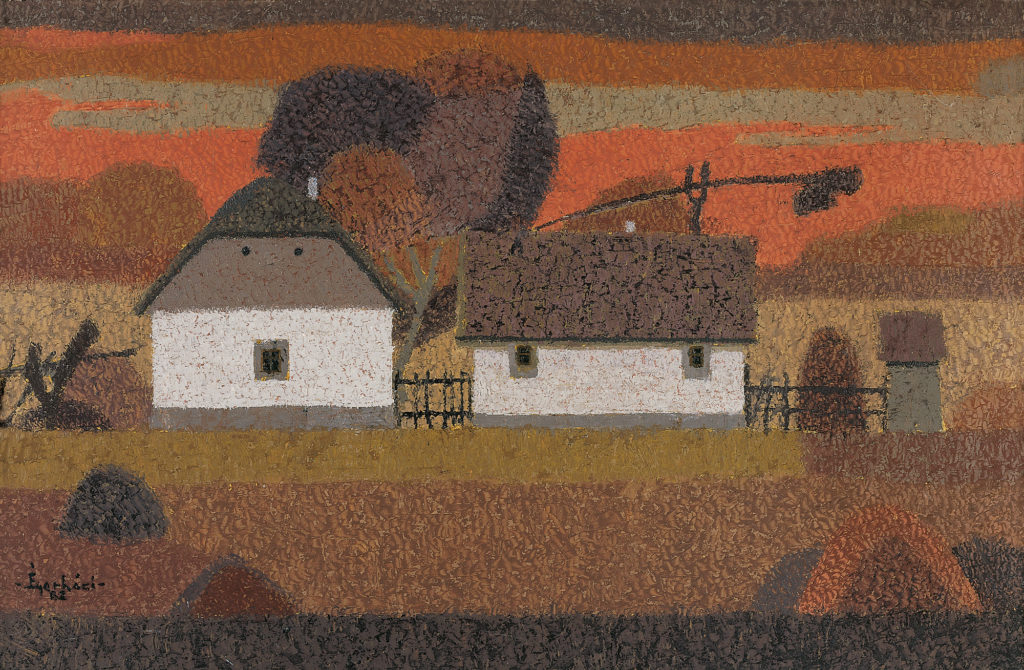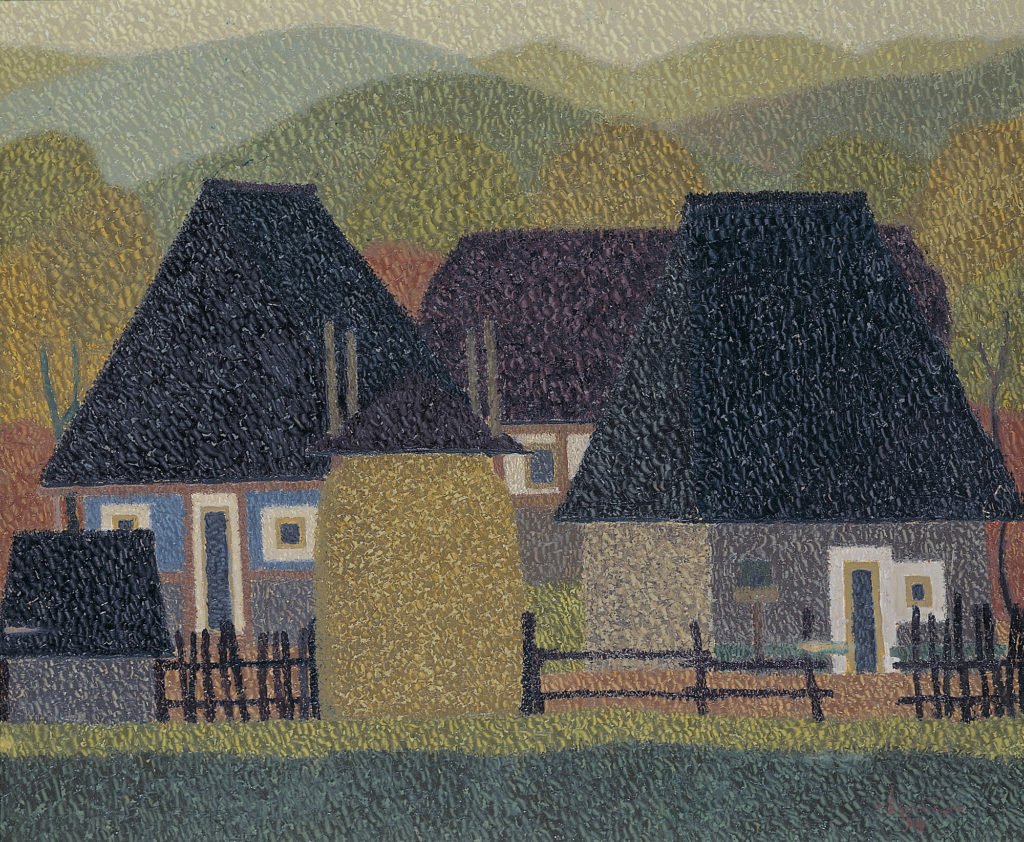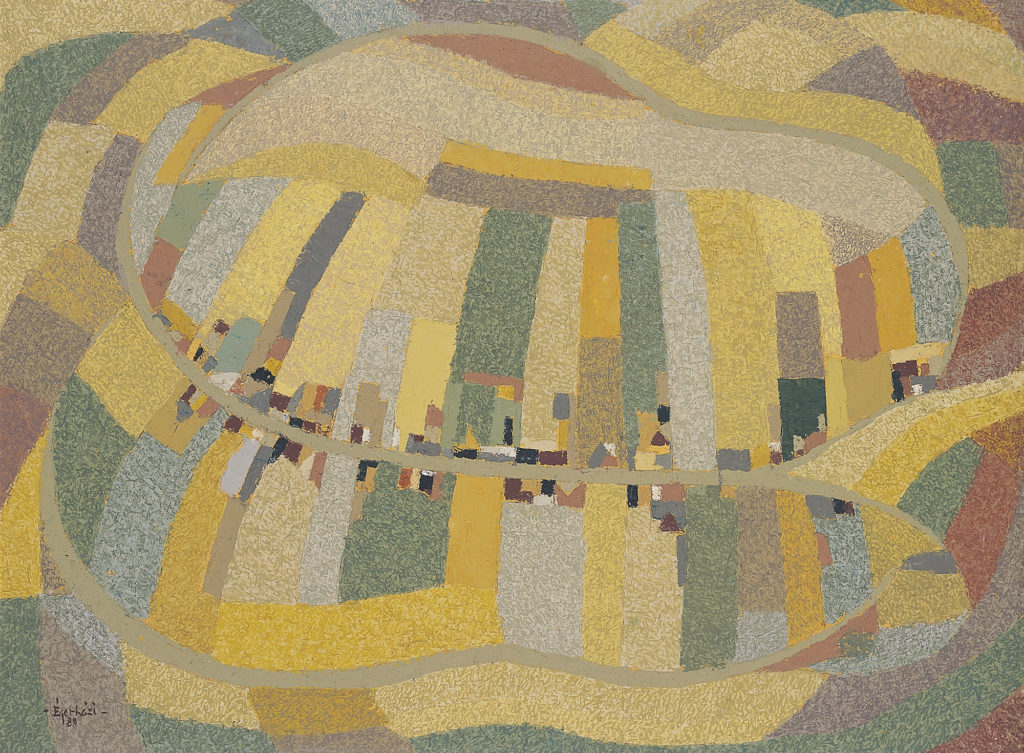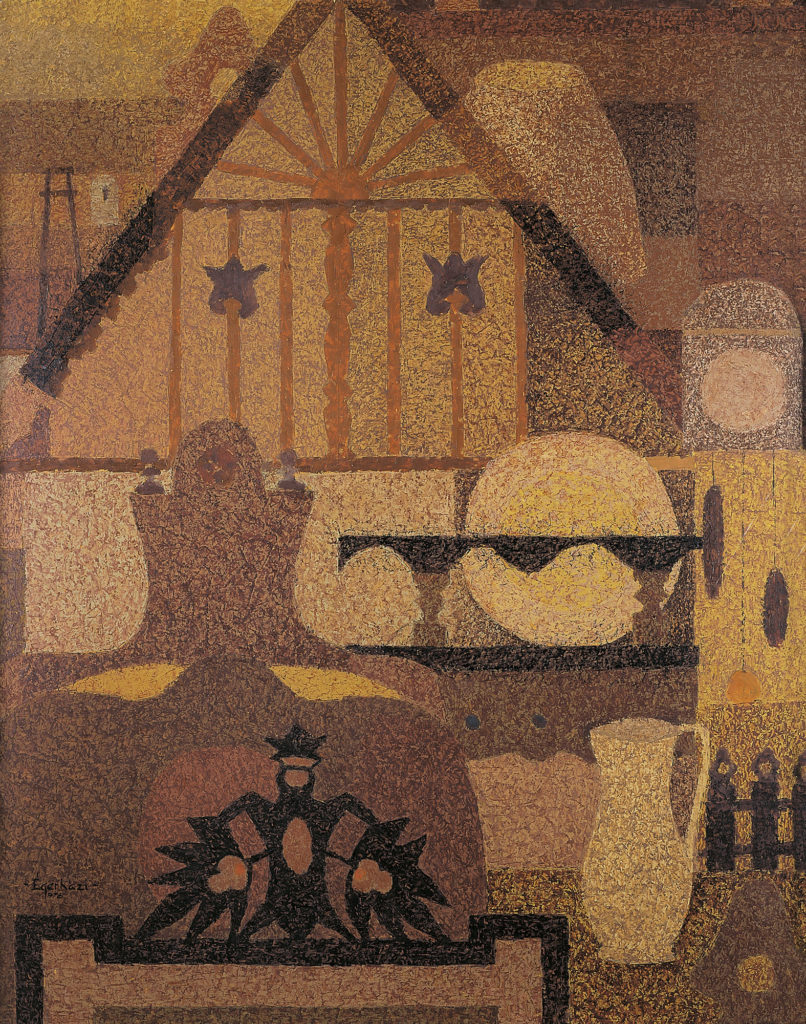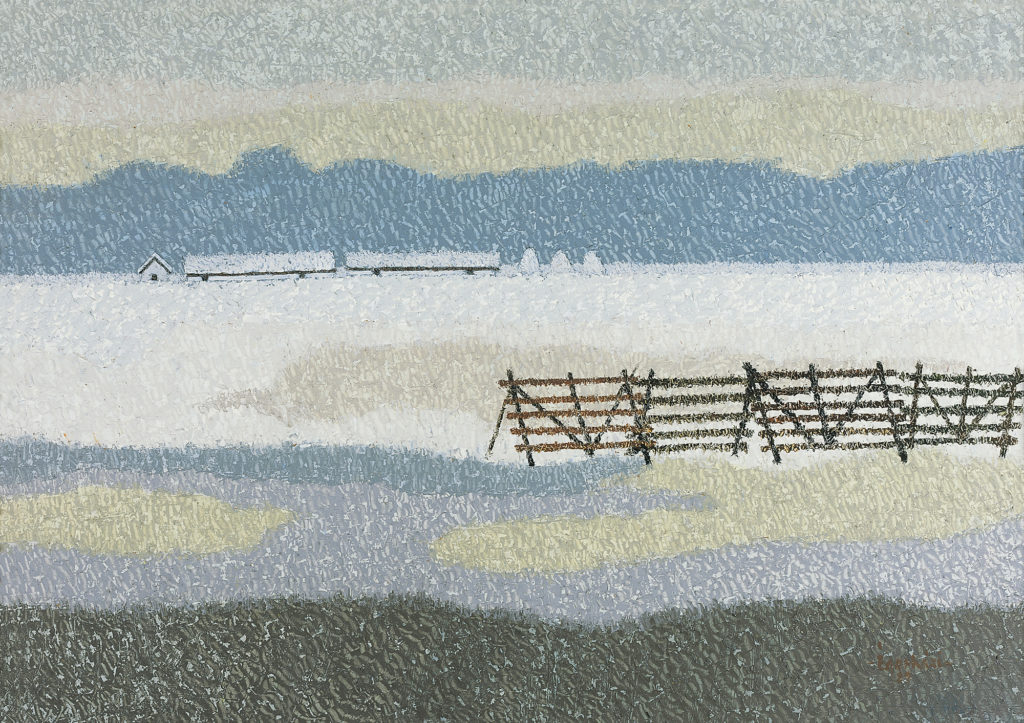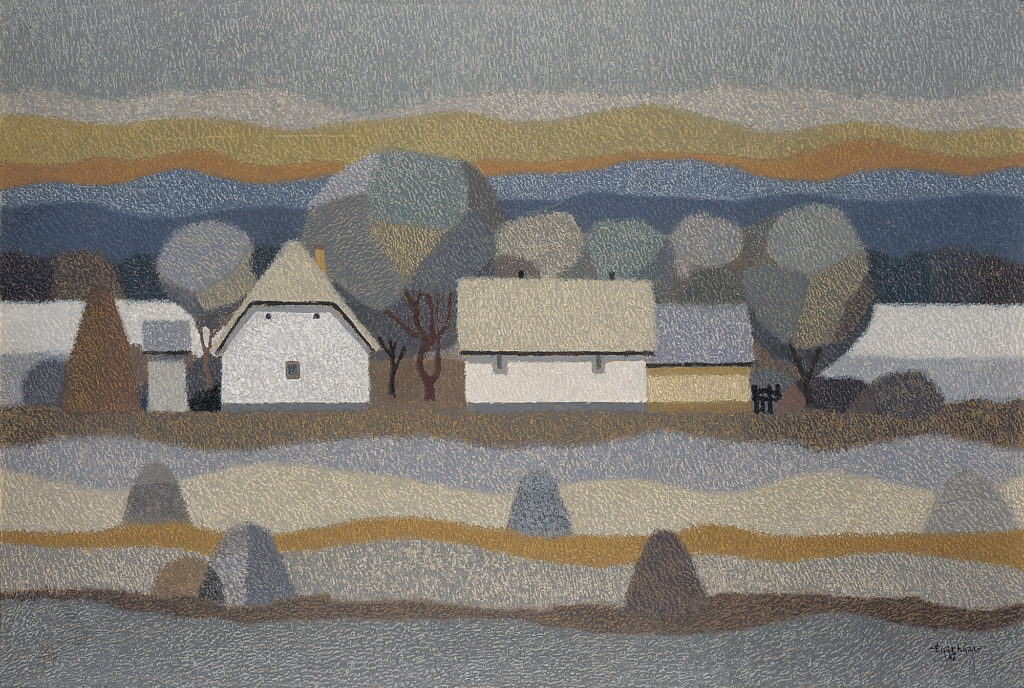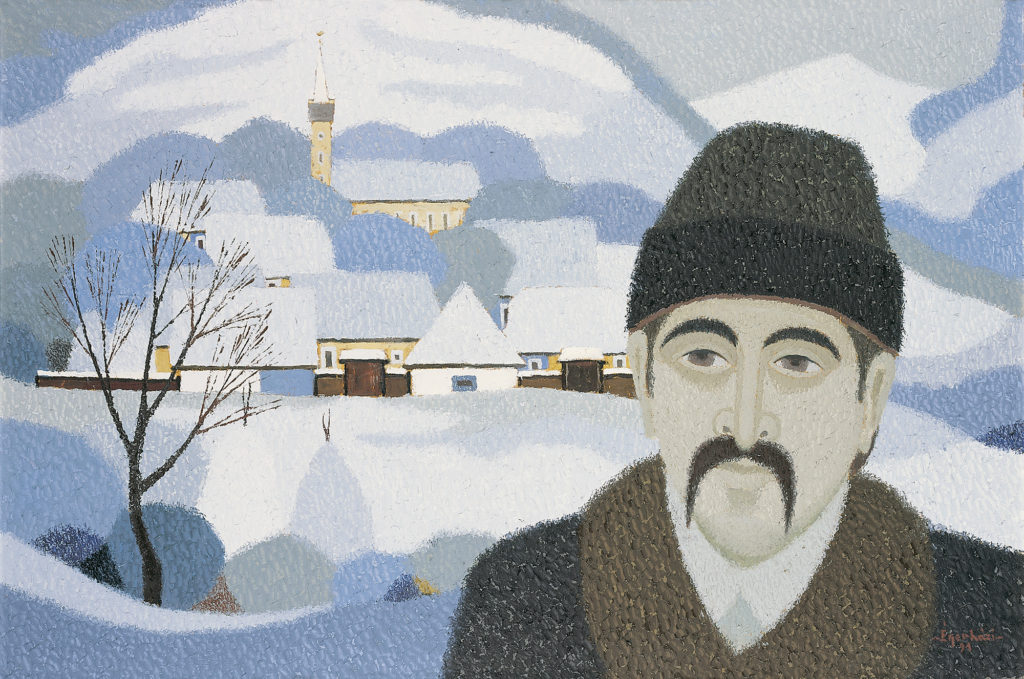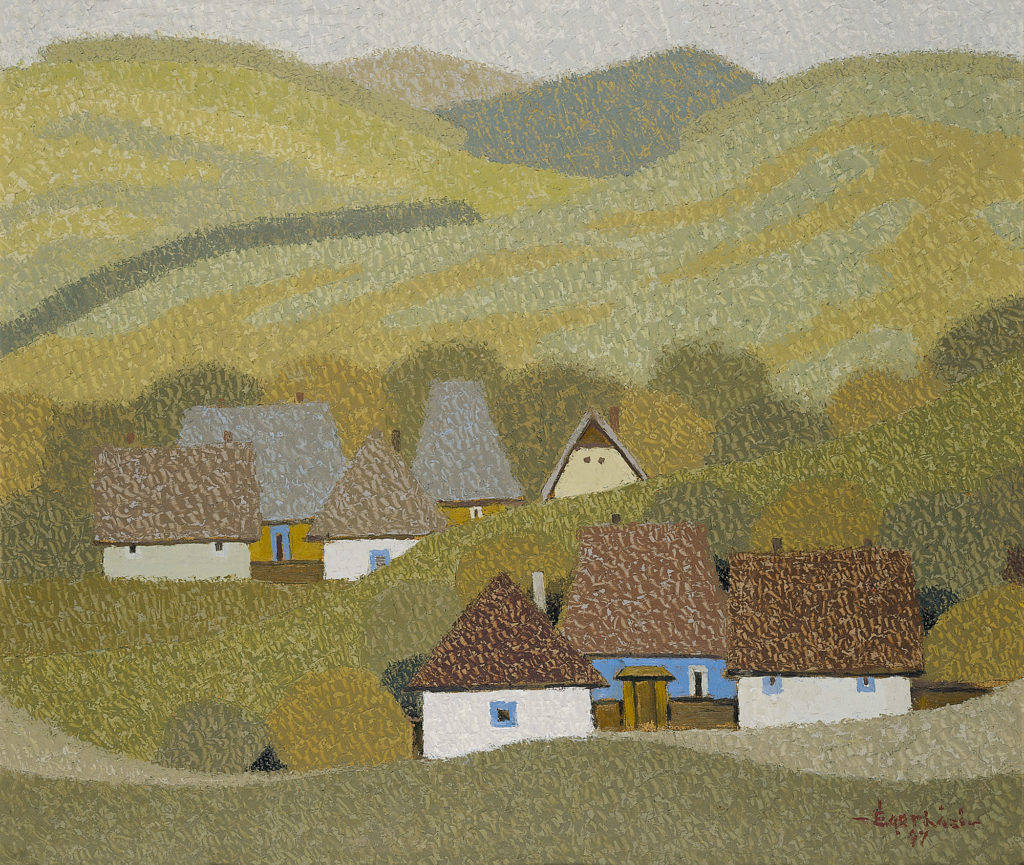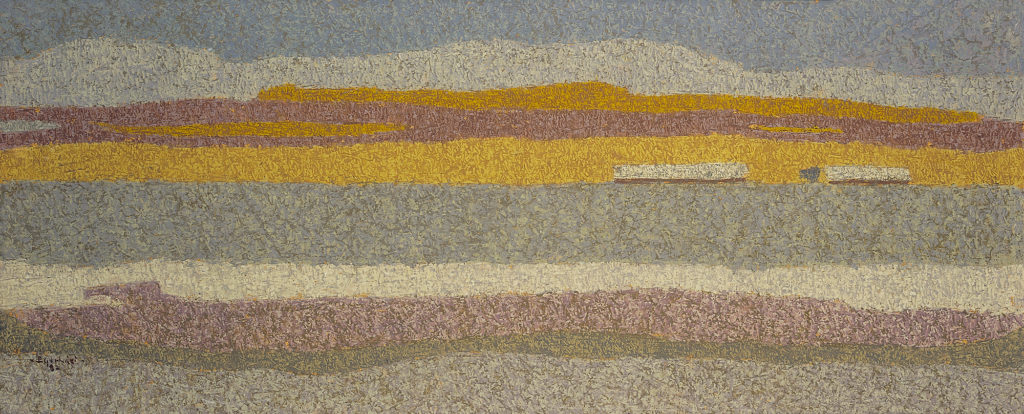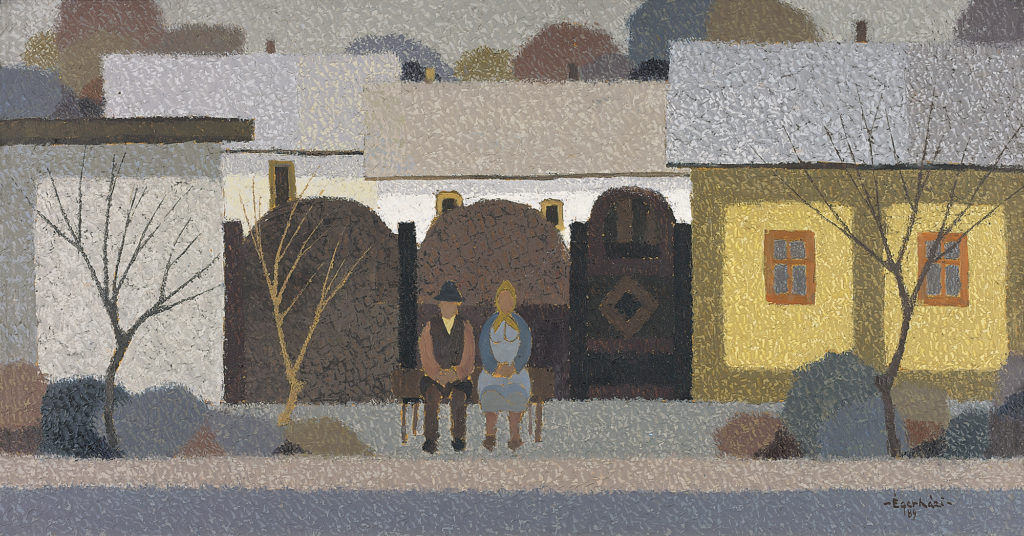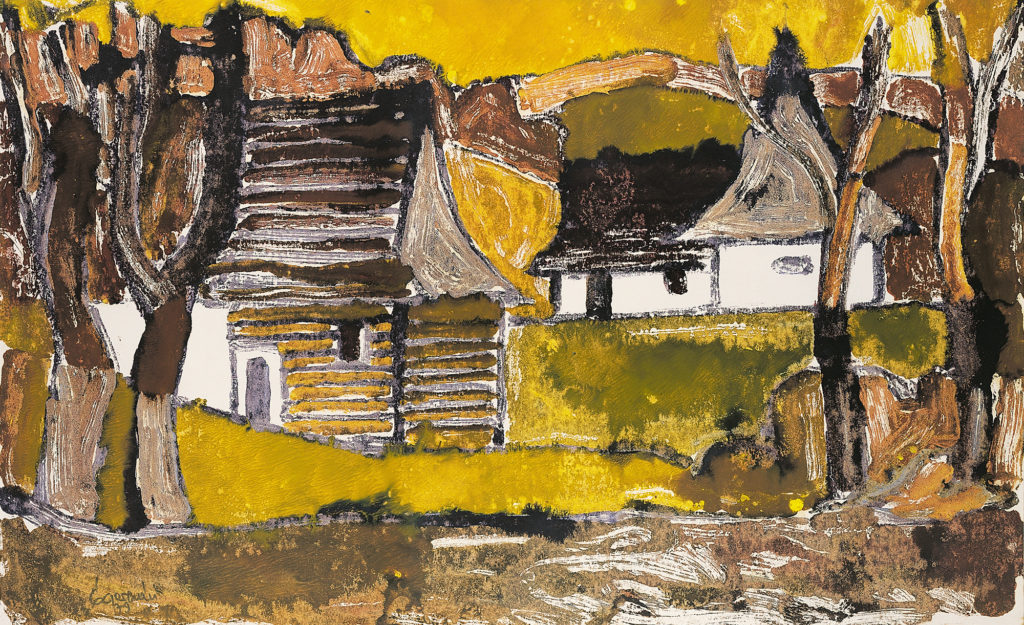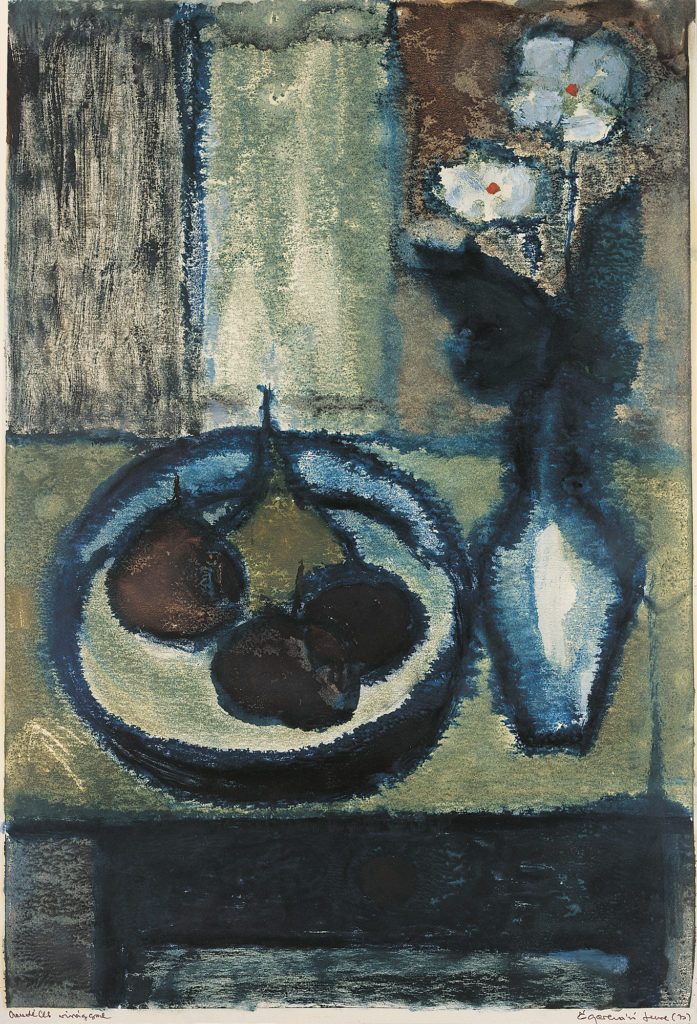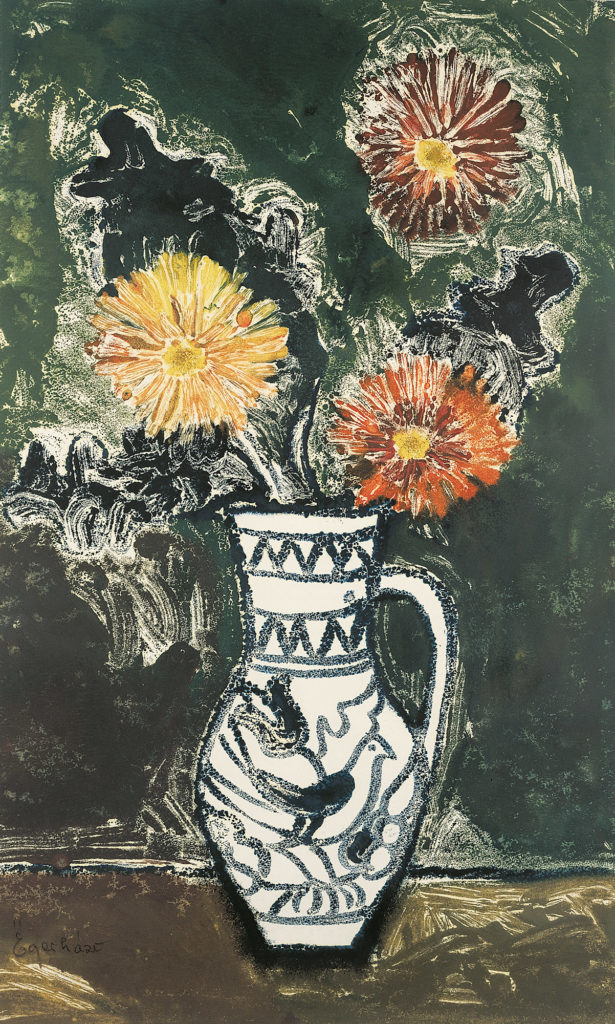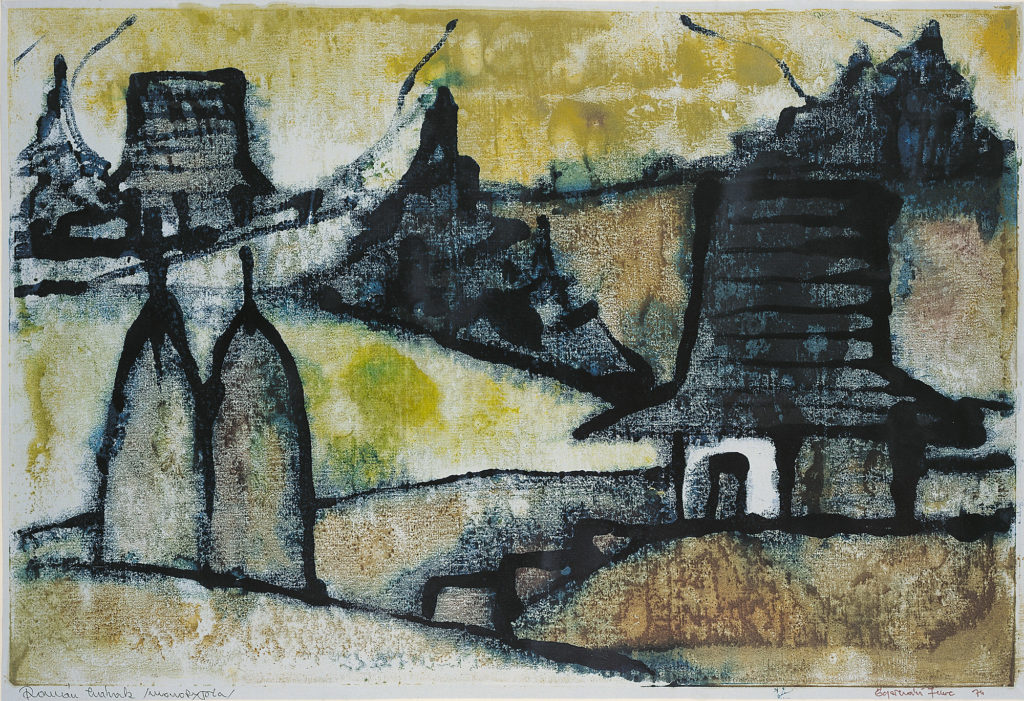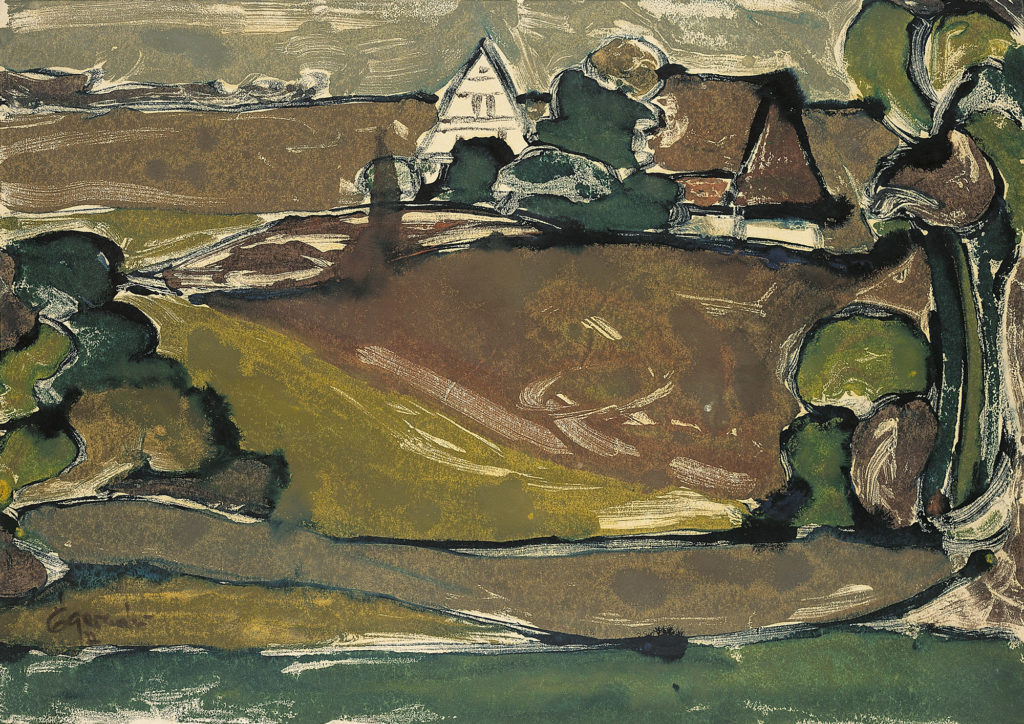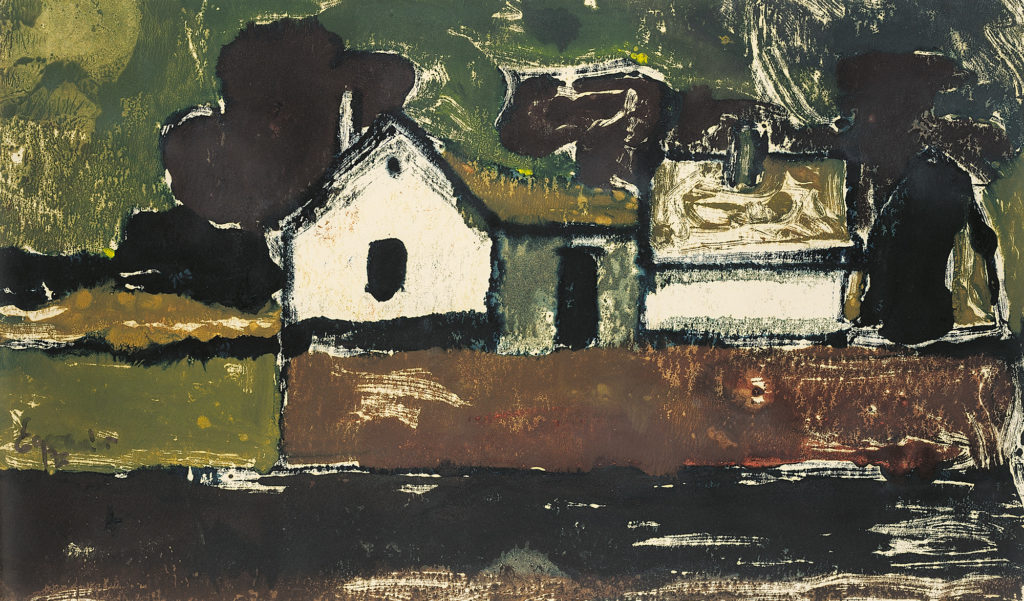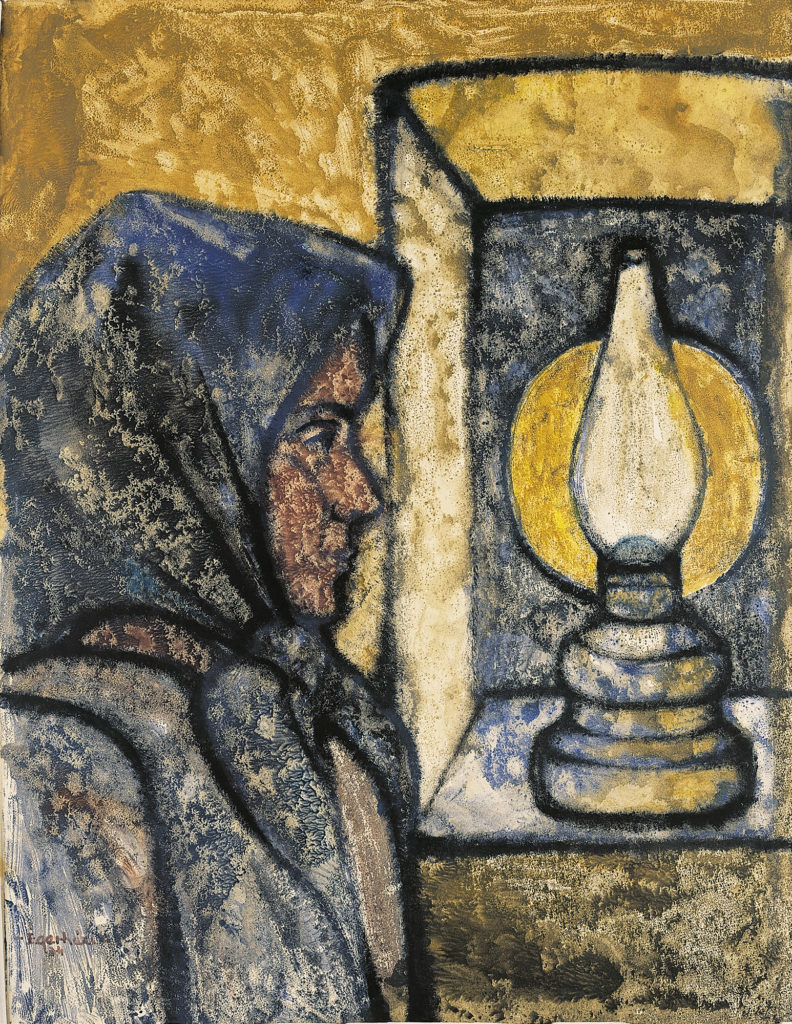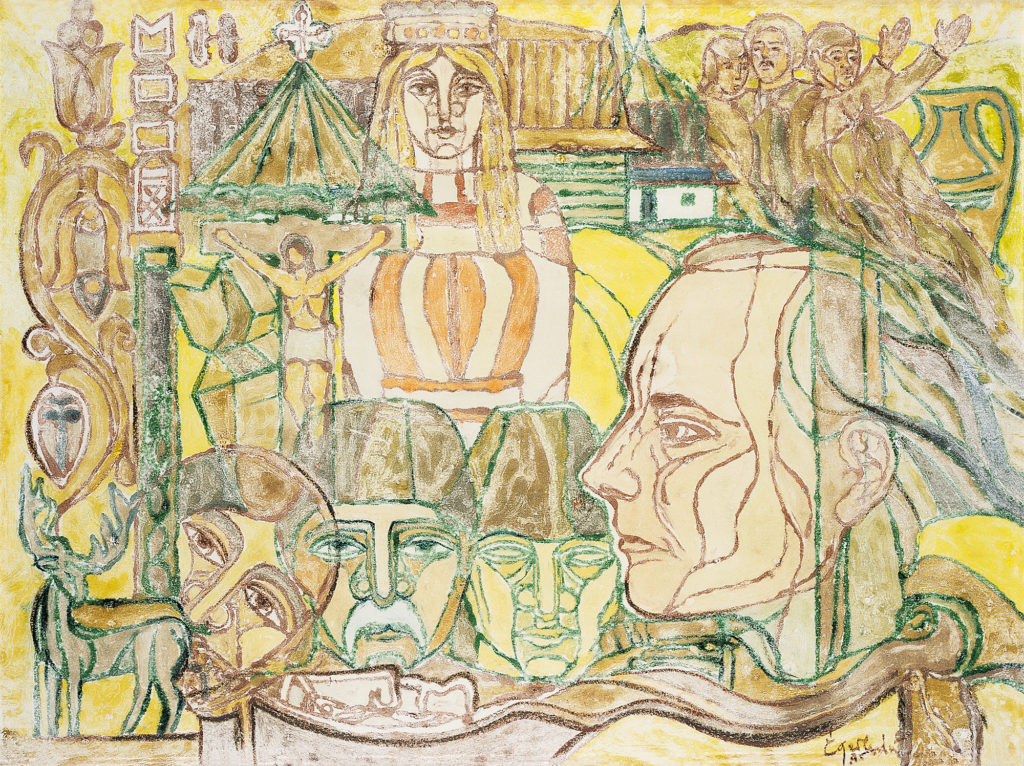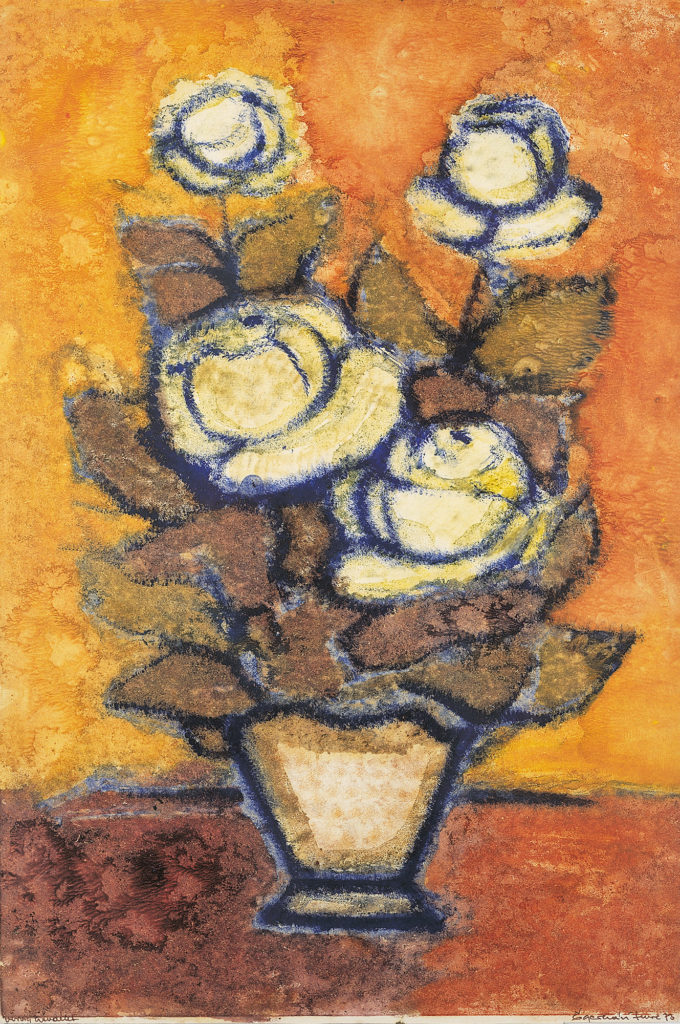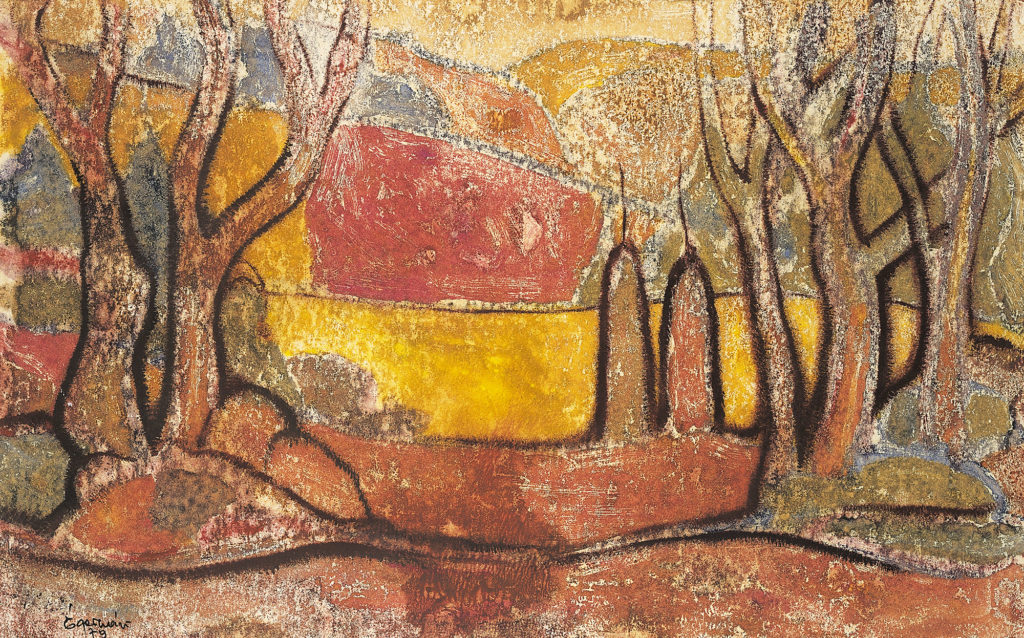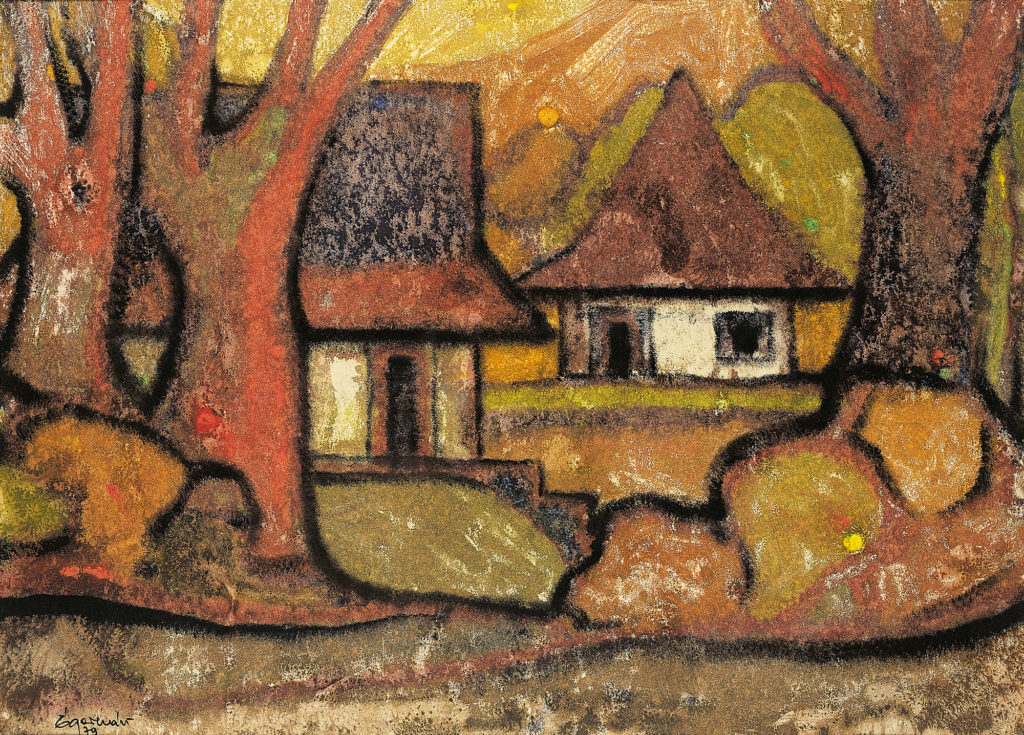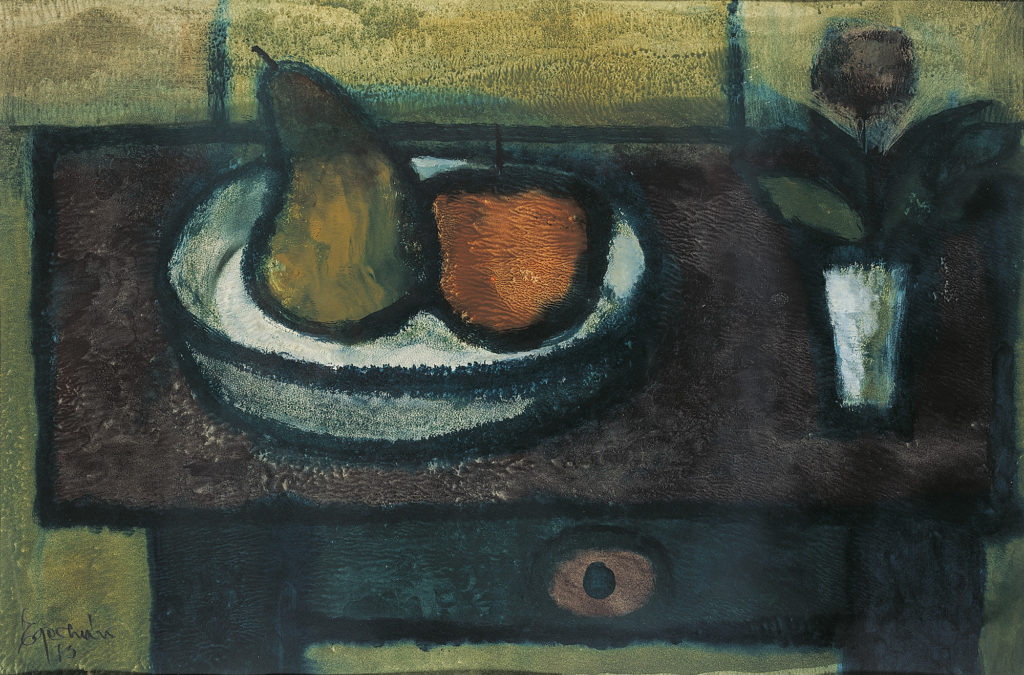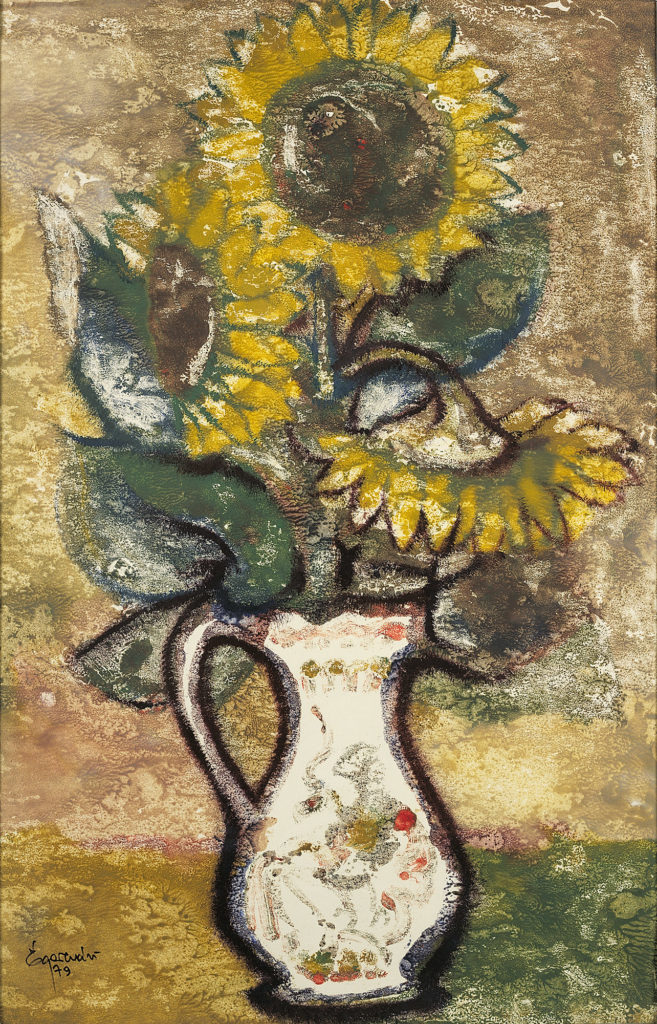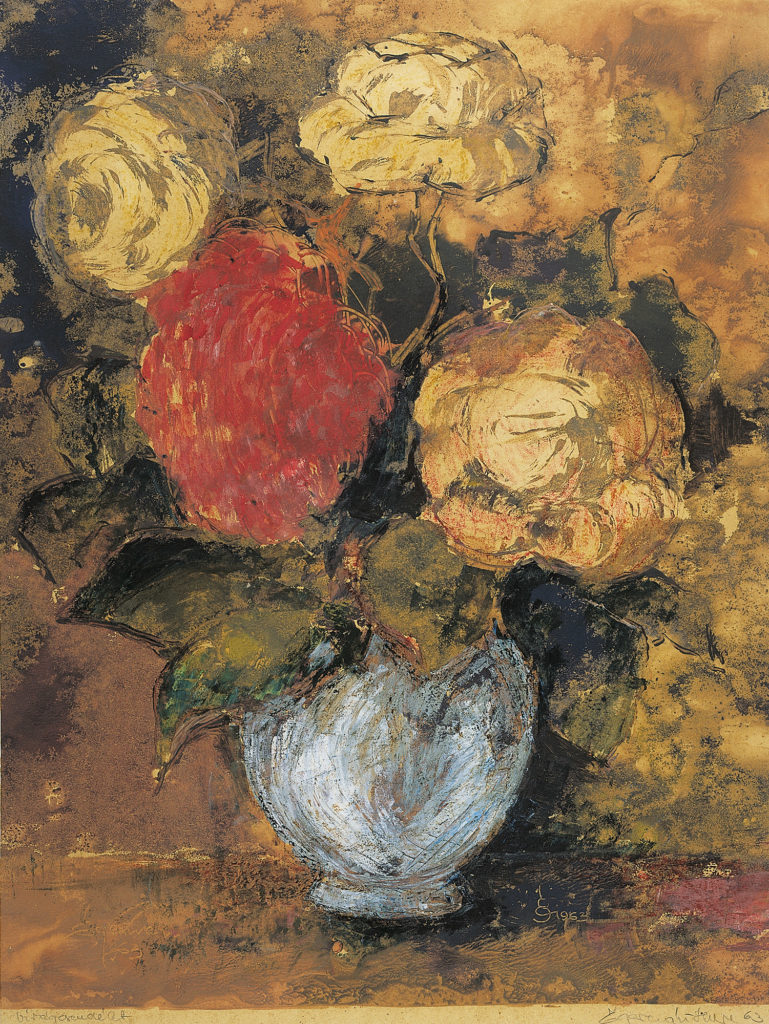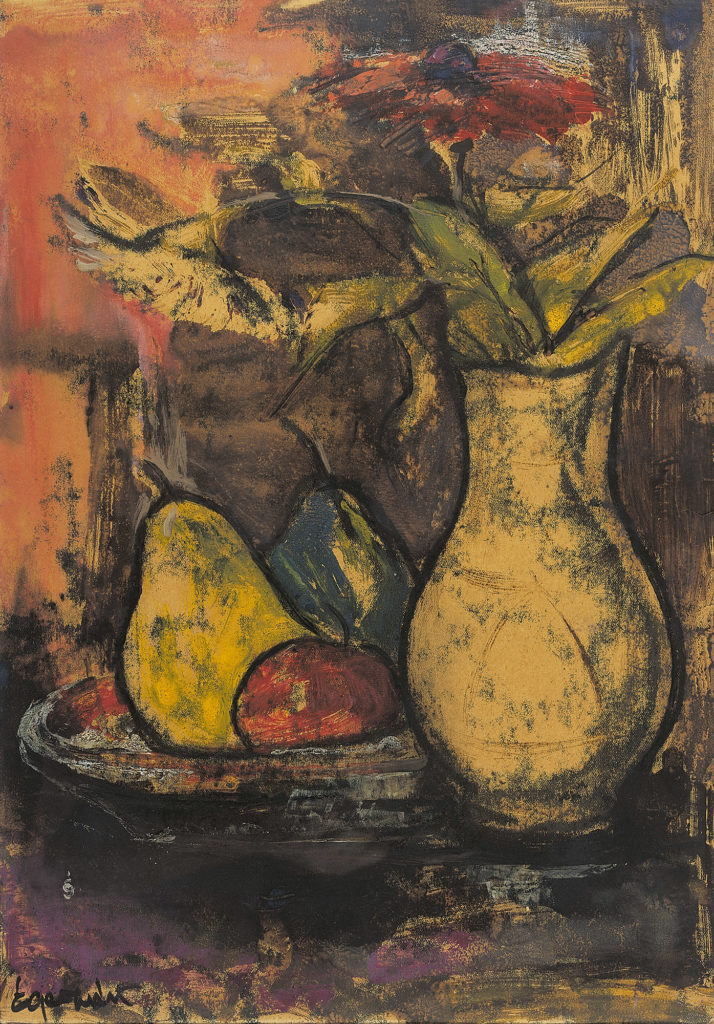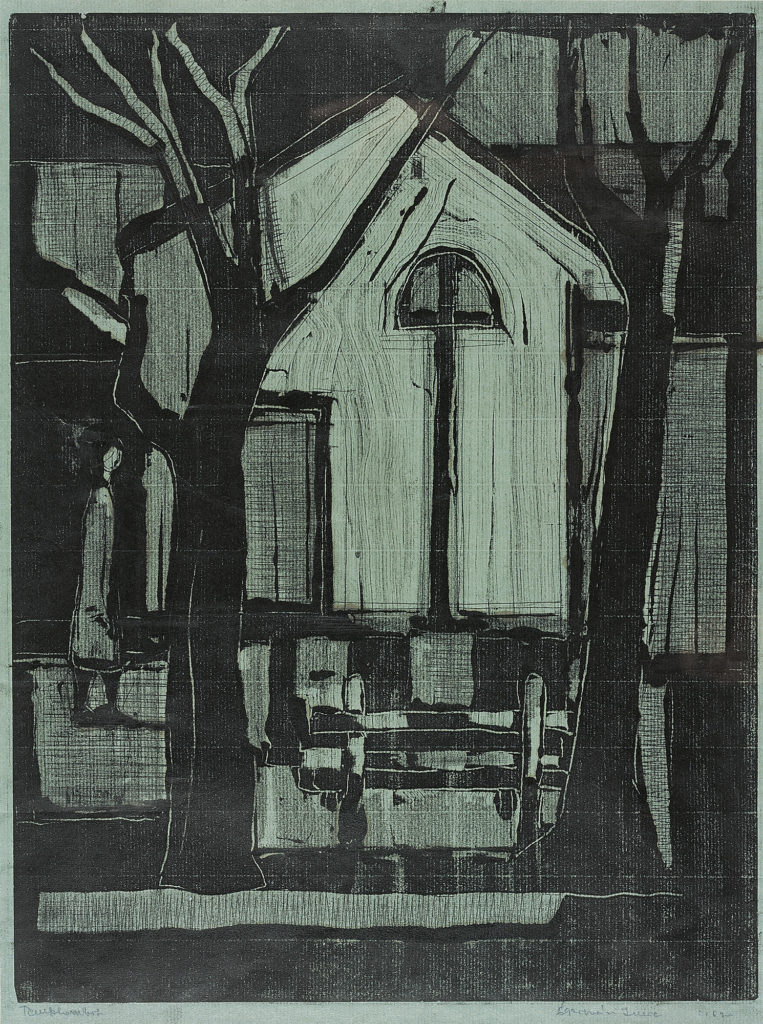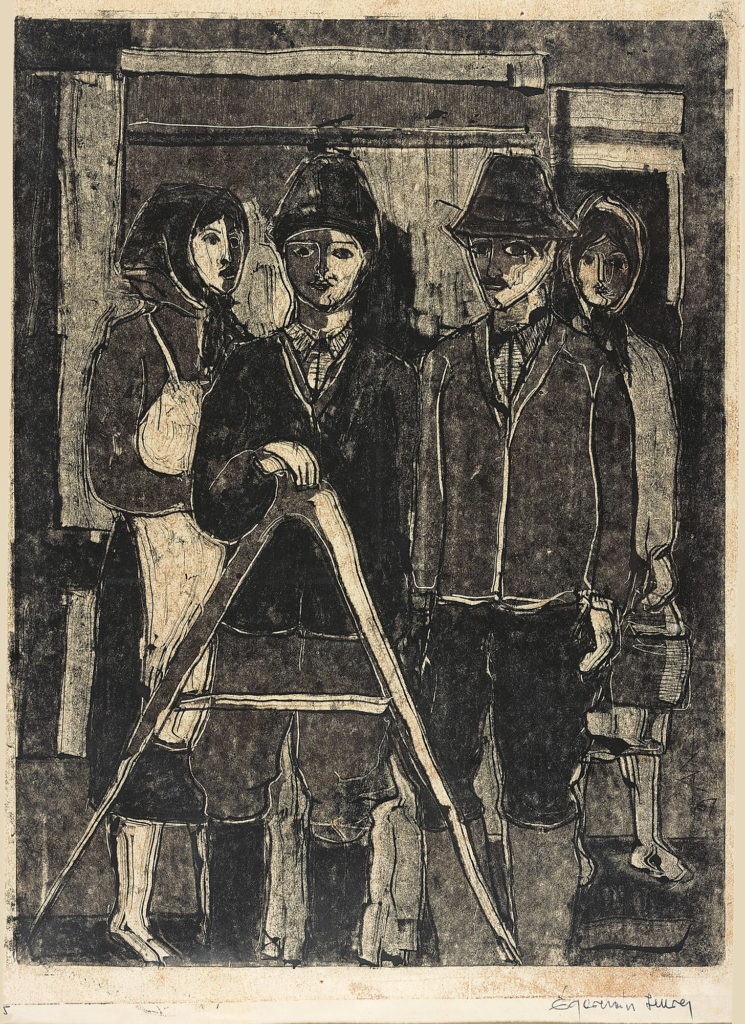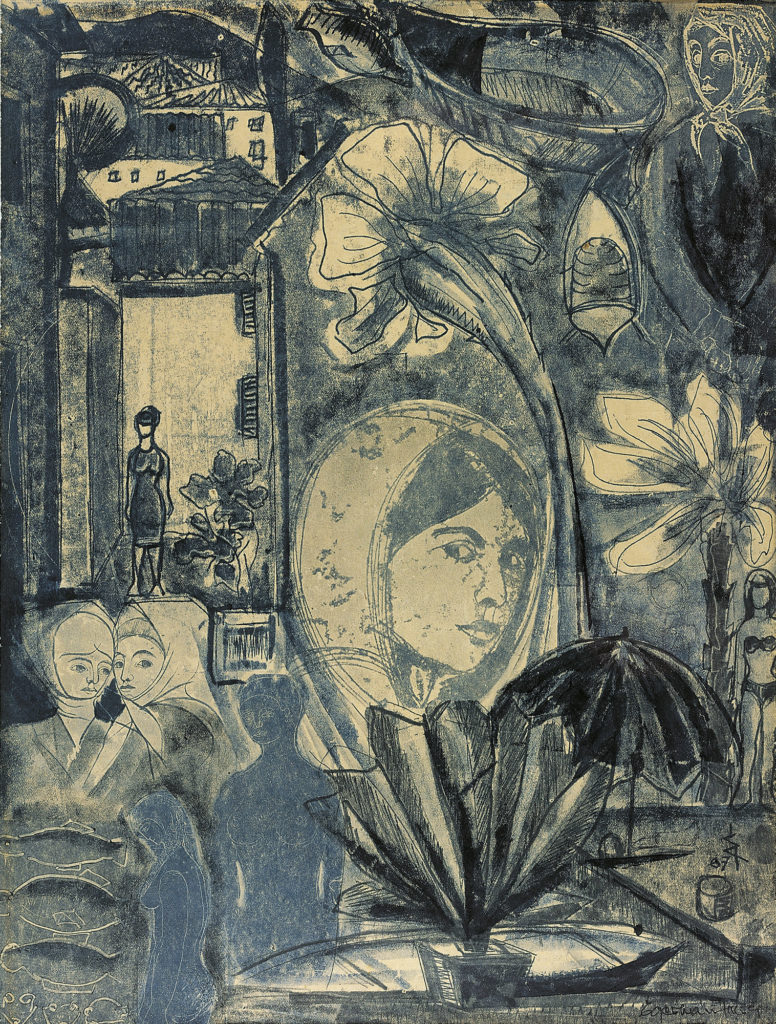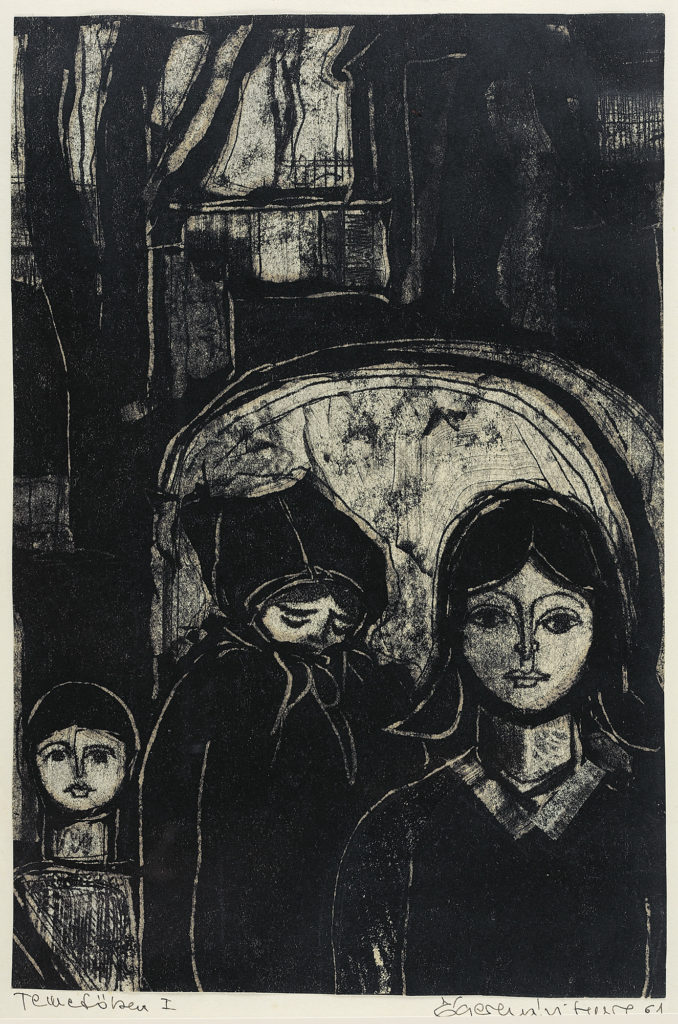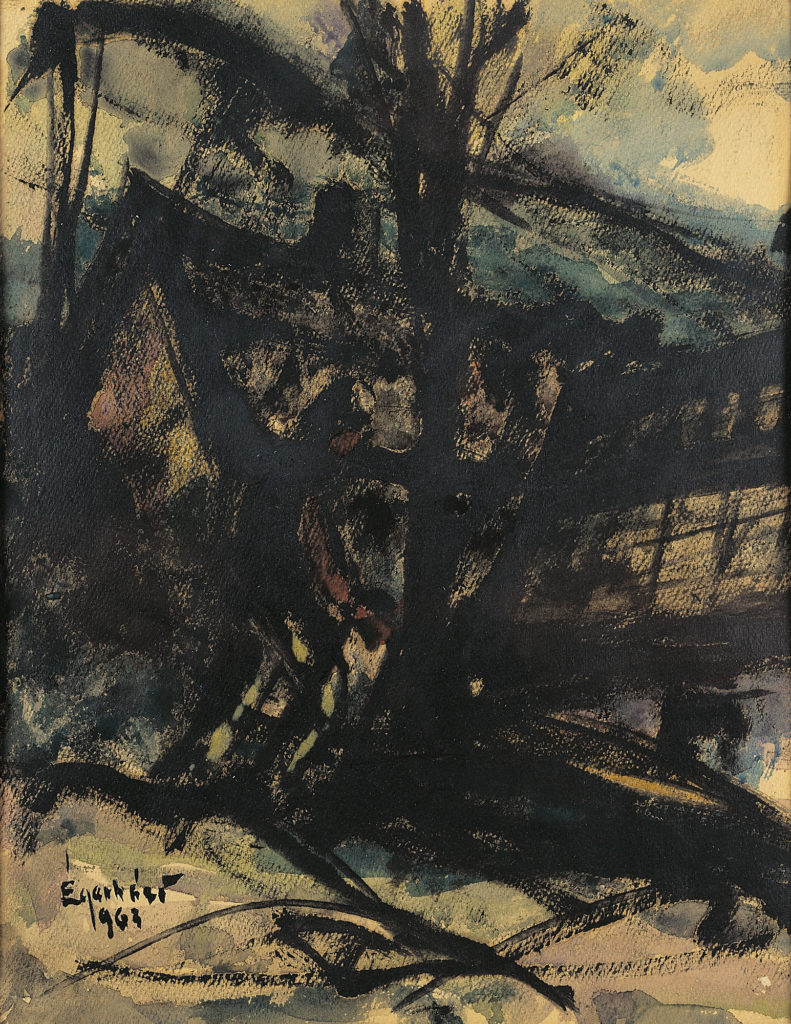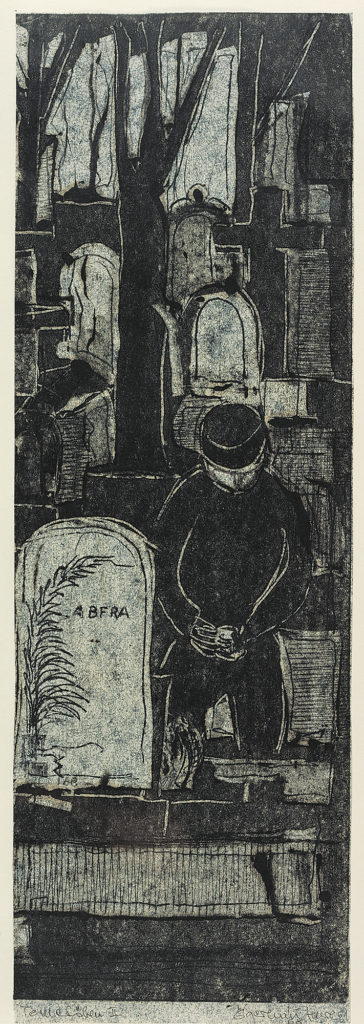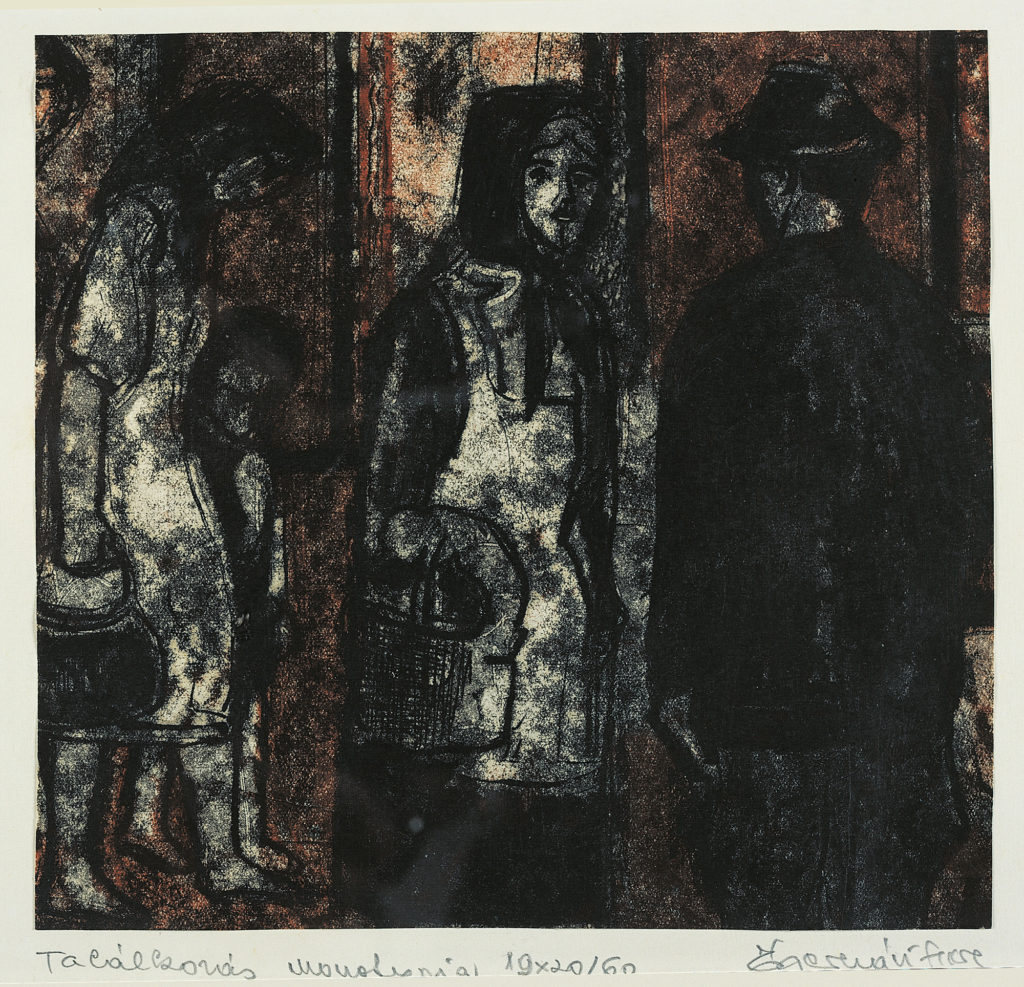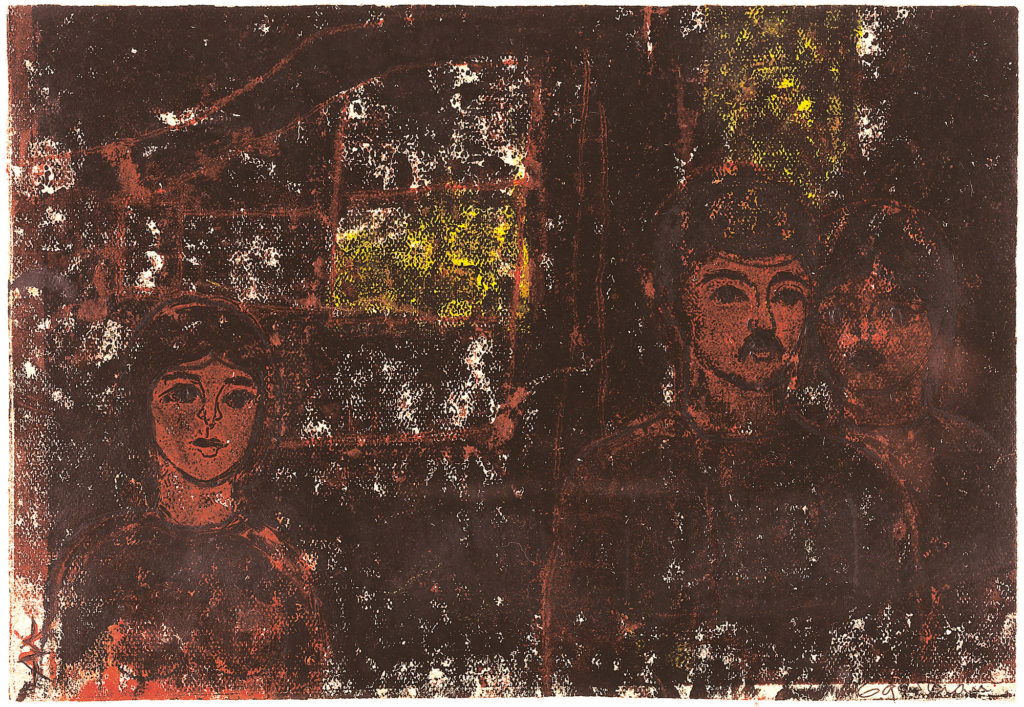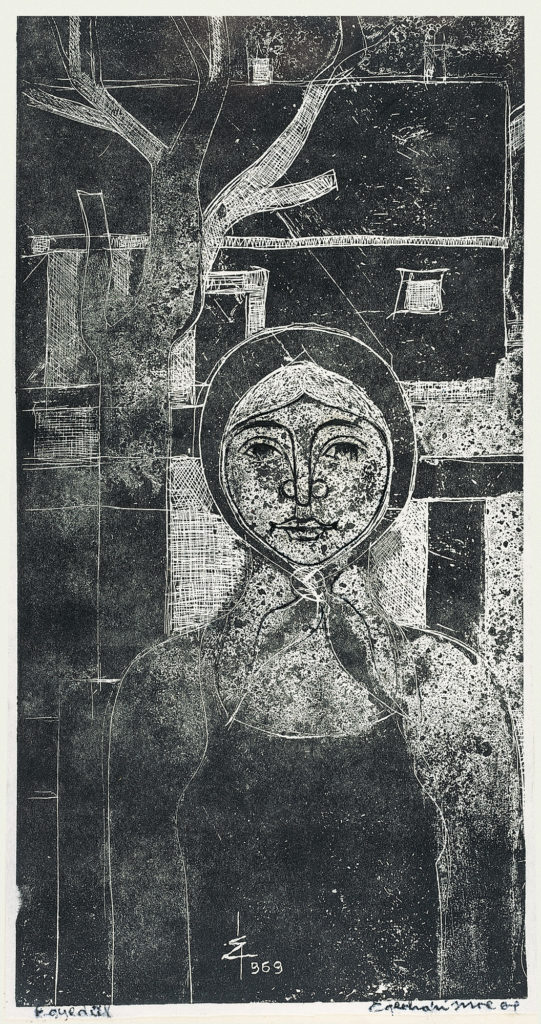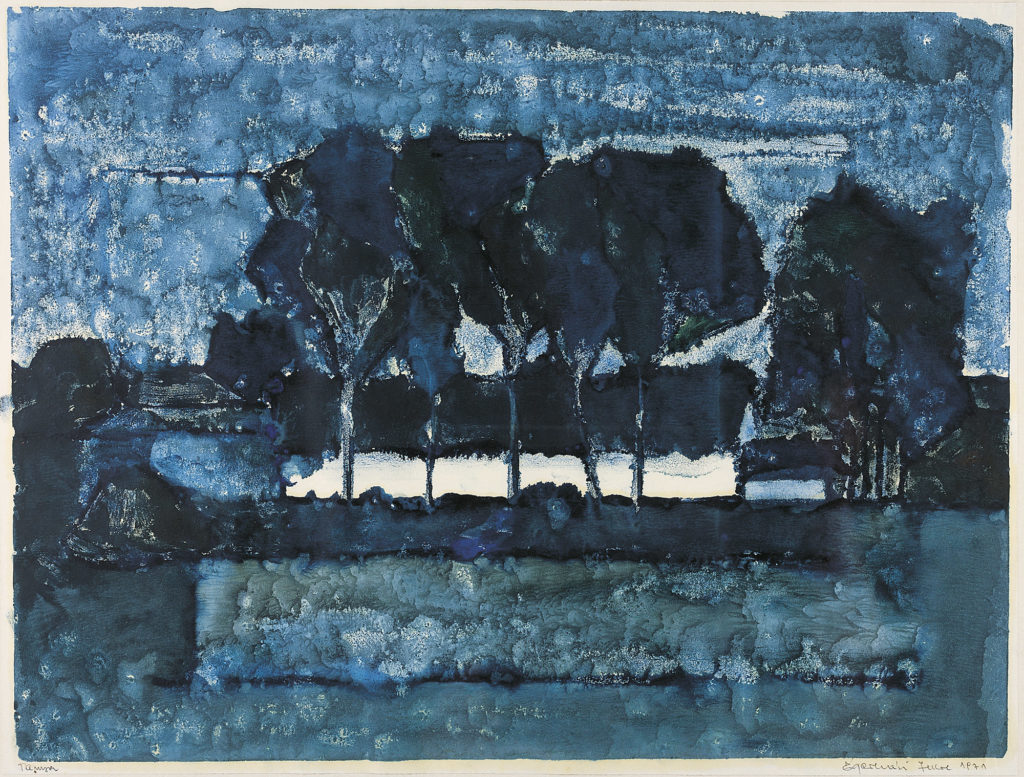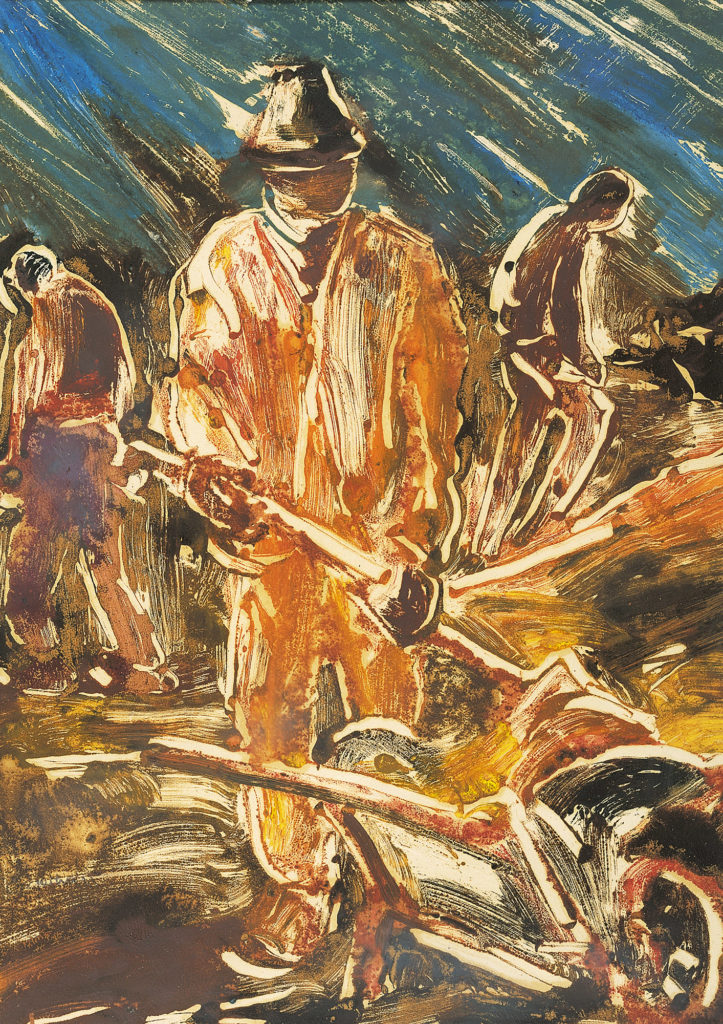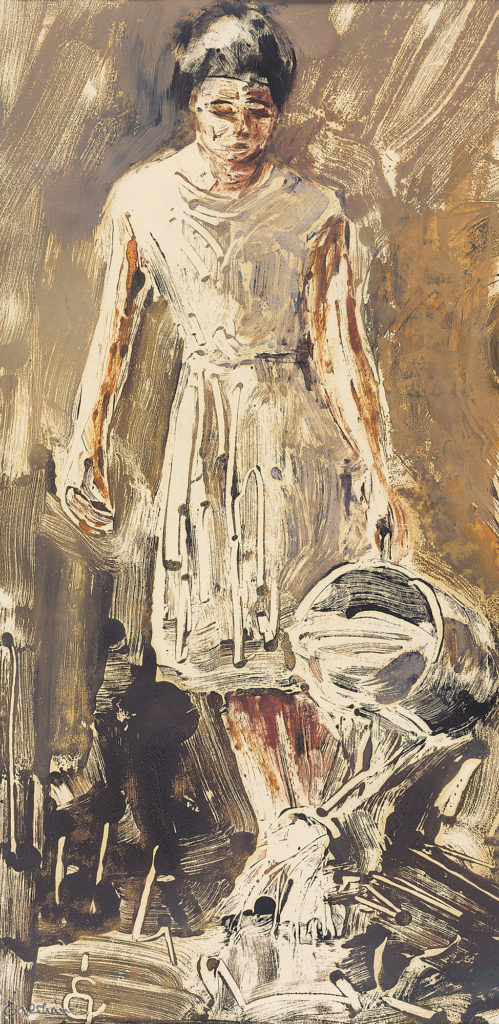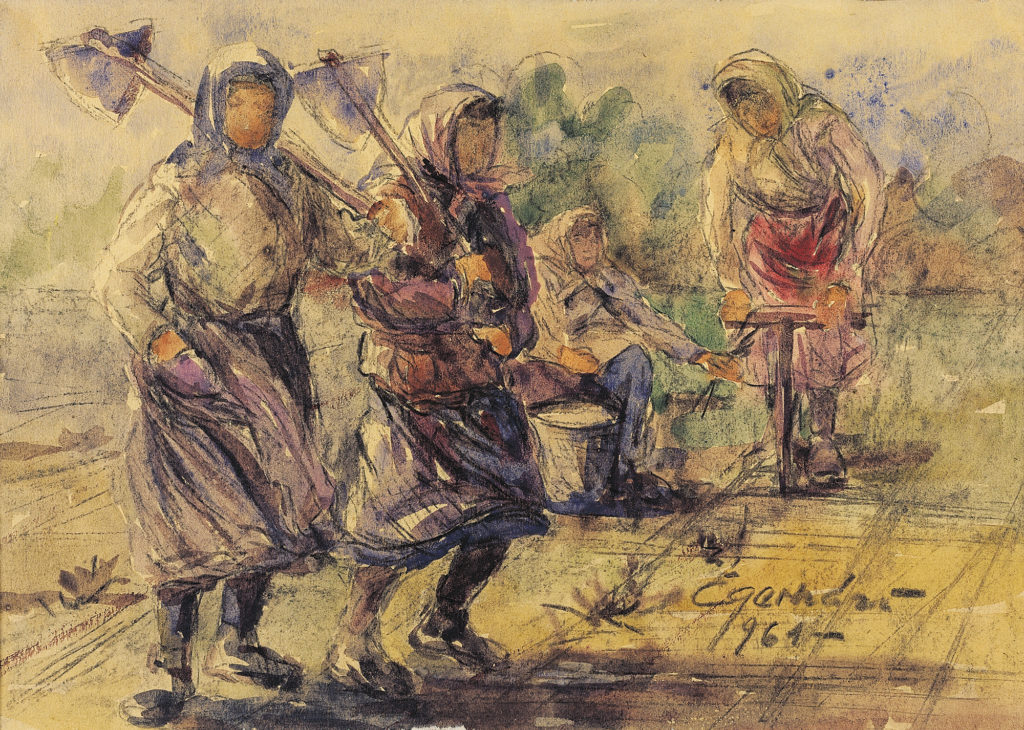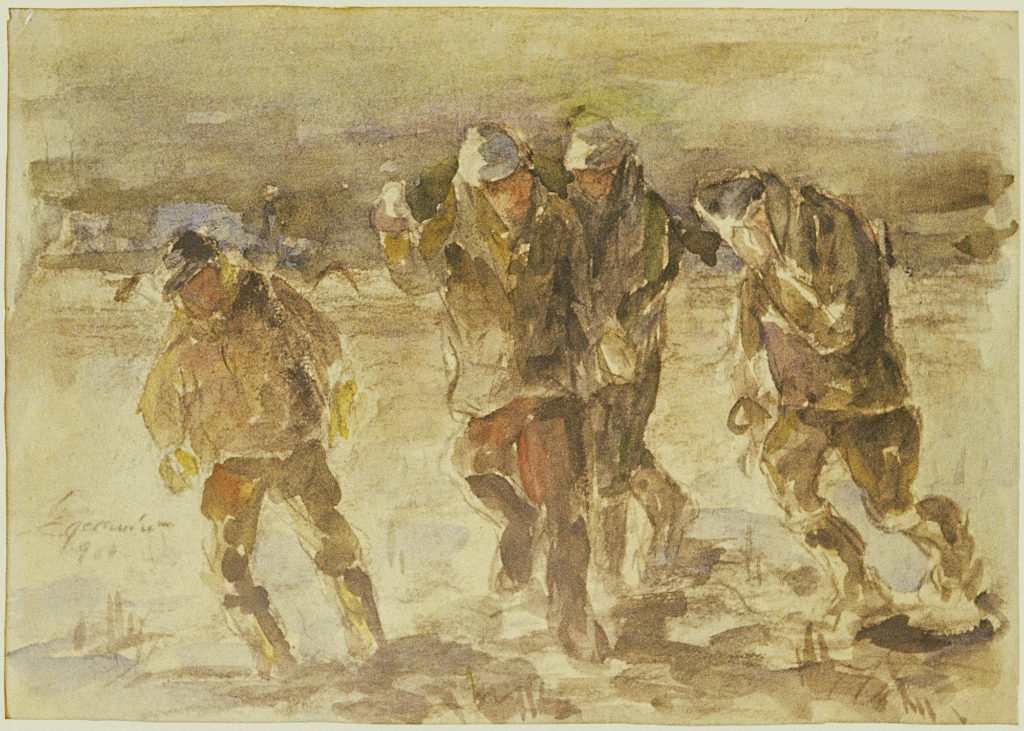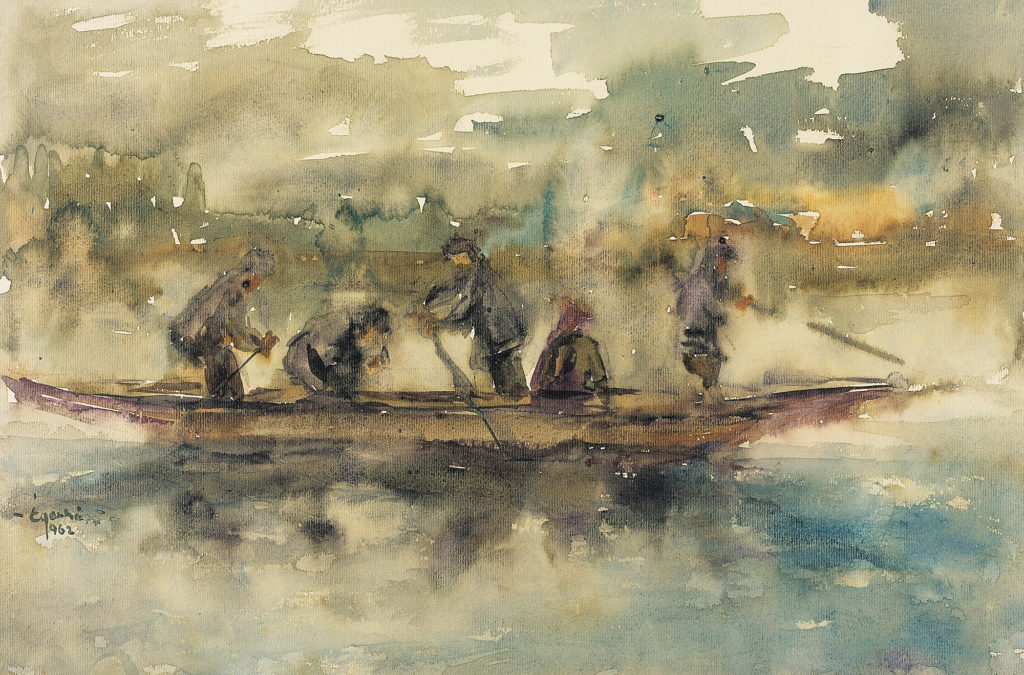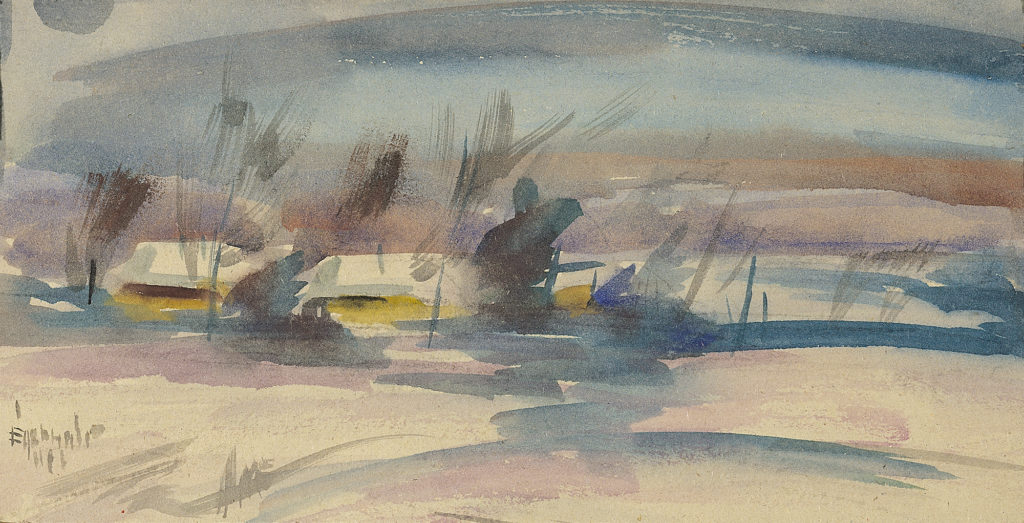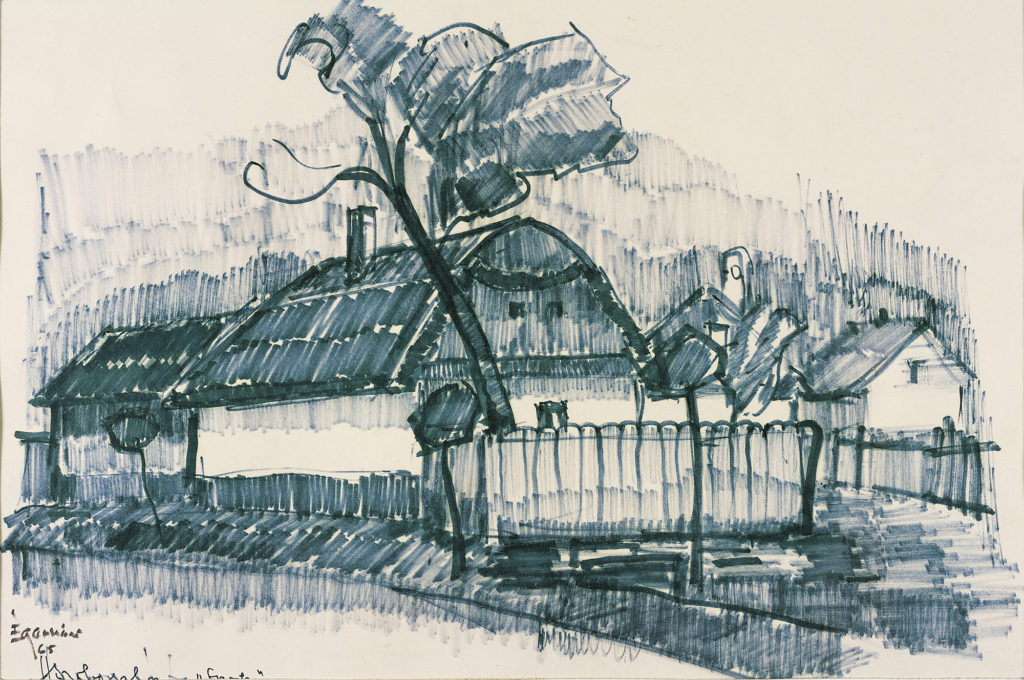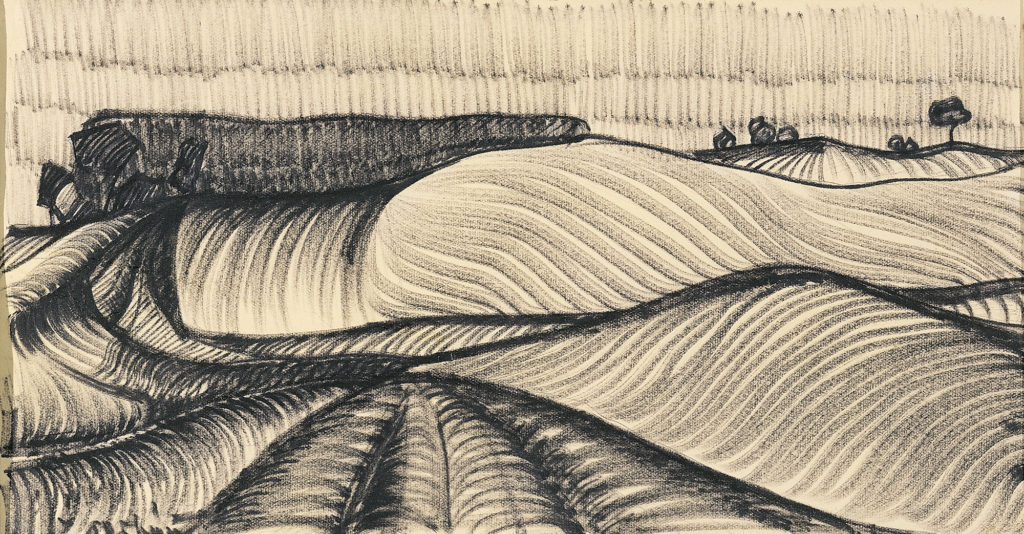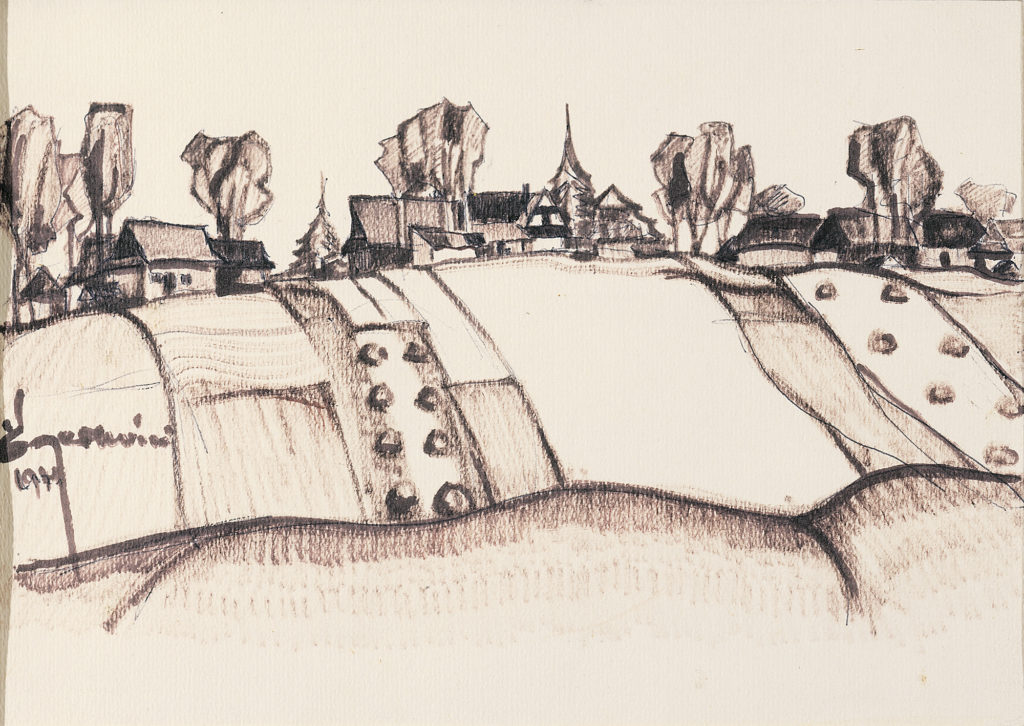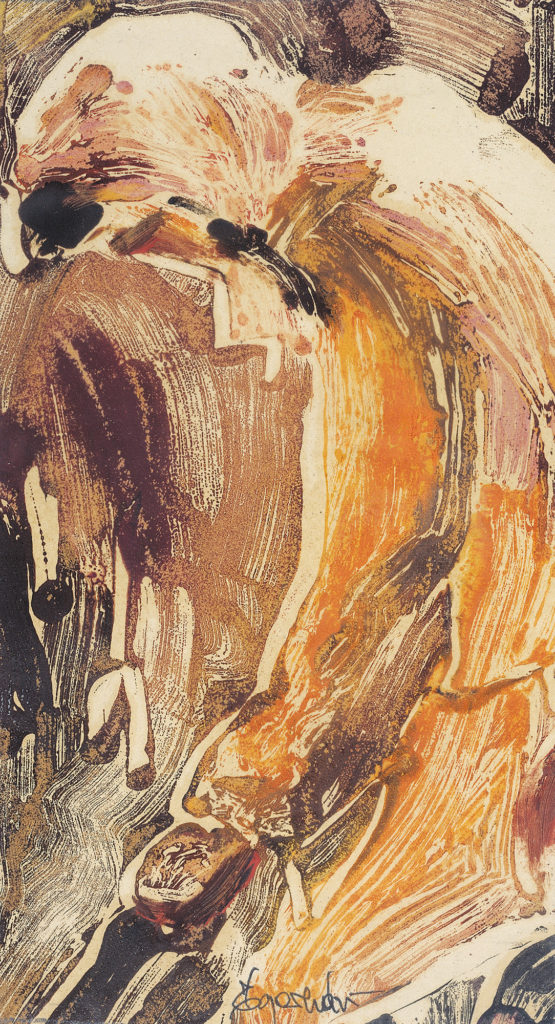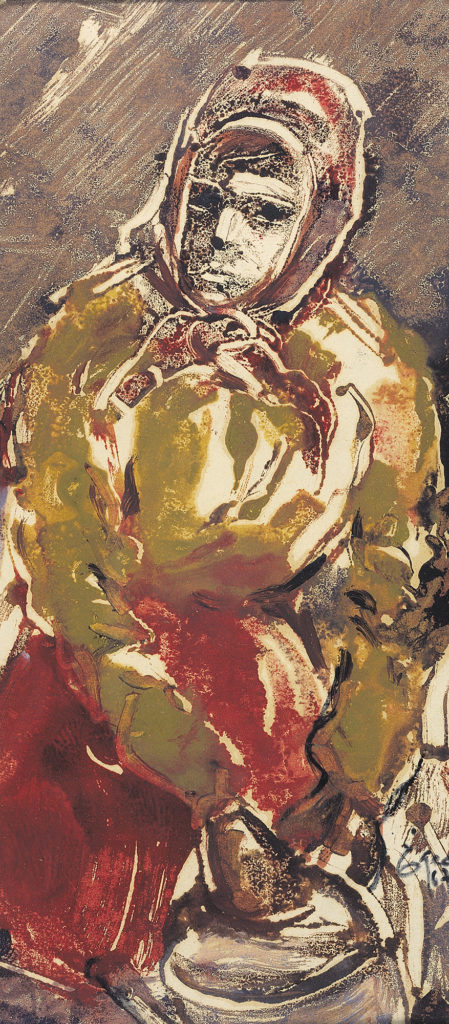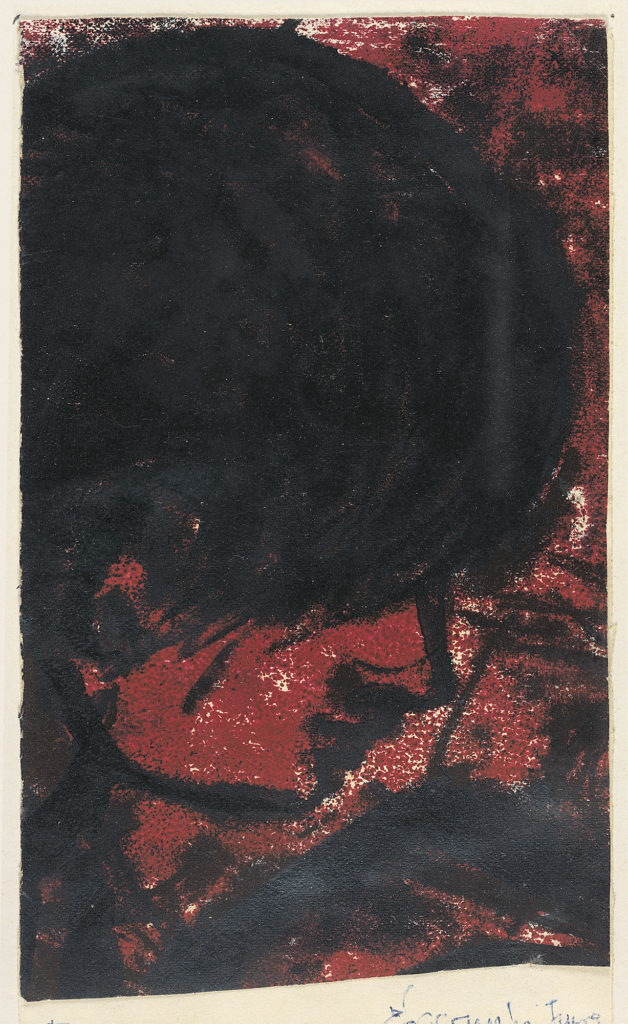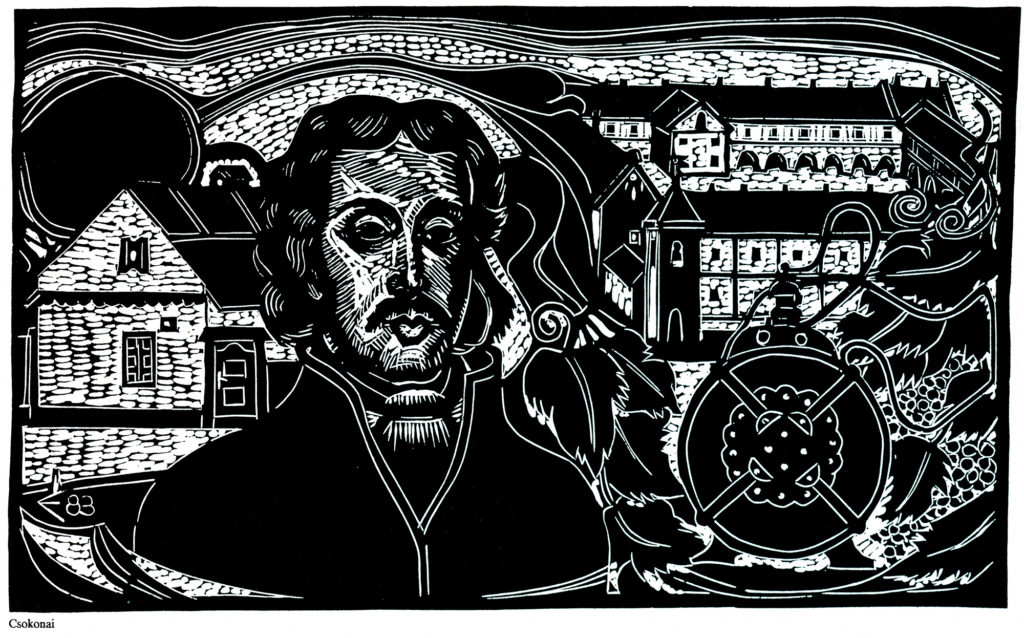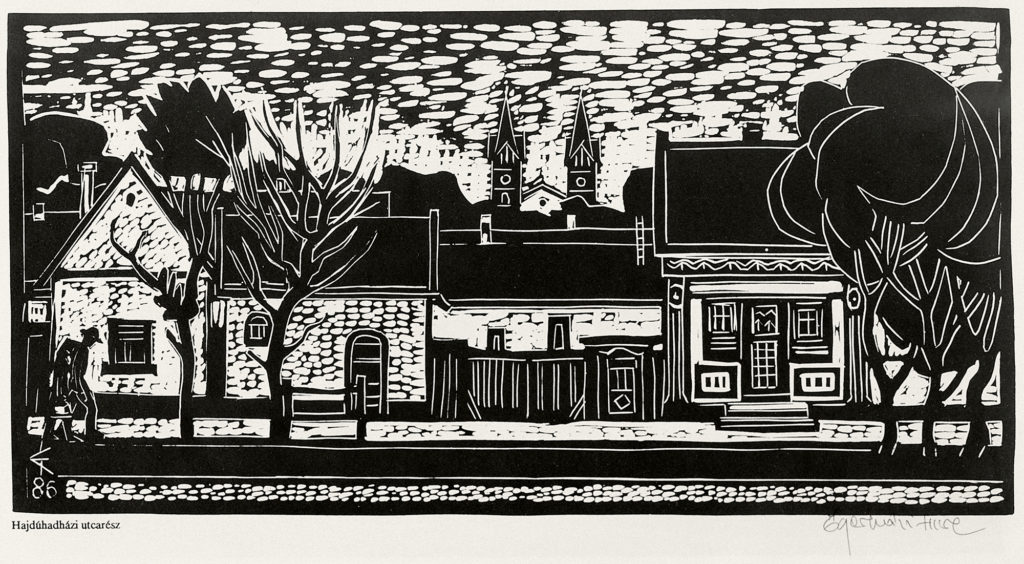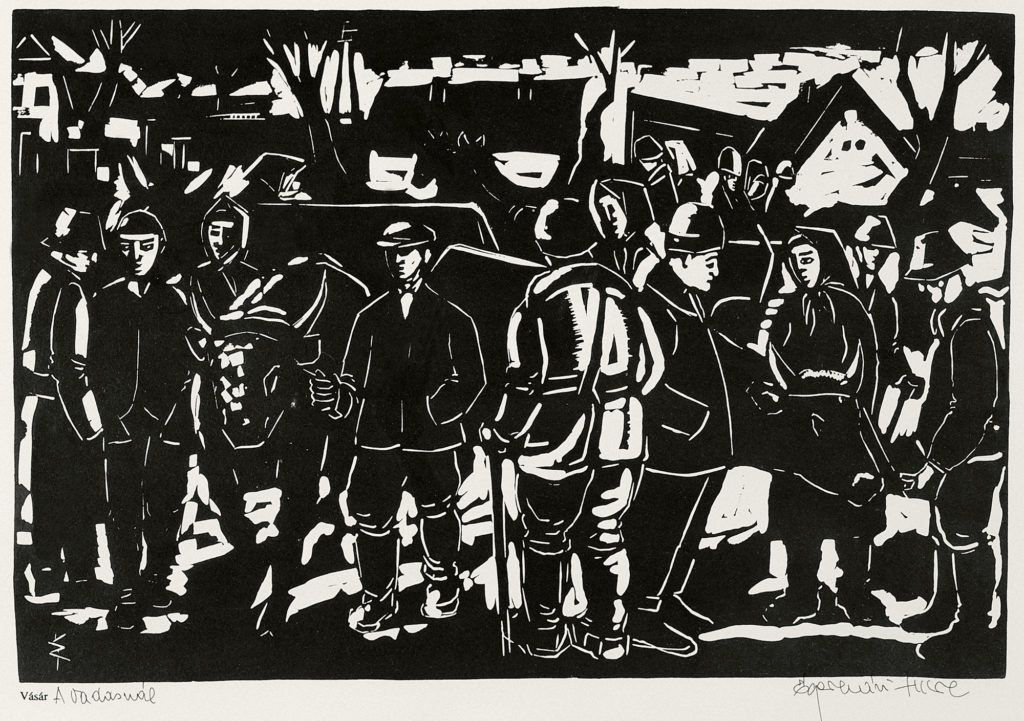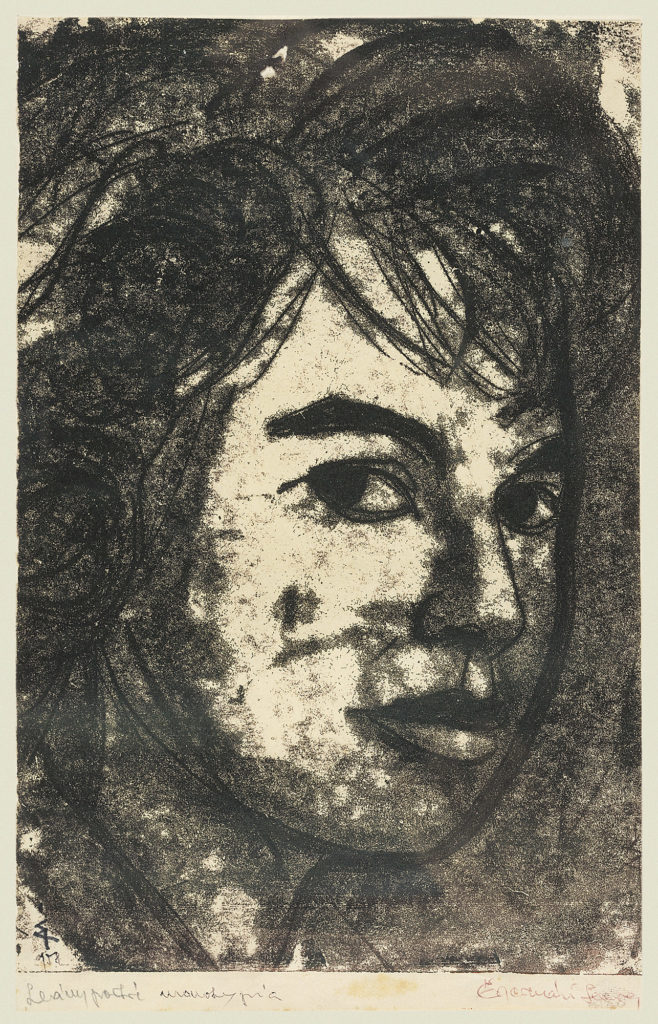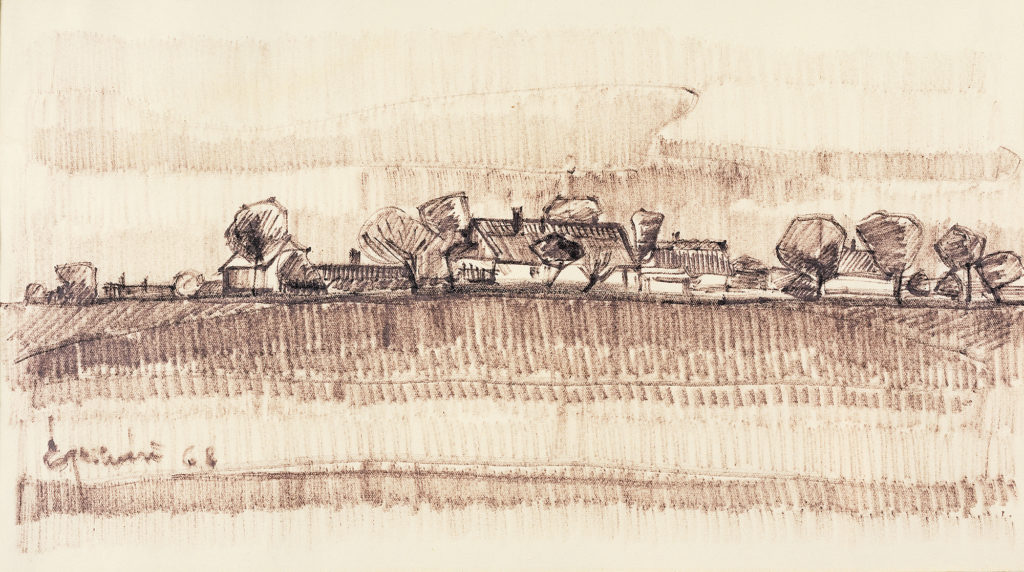Imre Égerházi was 9 years old when they moved from Hajdúhadház to Debrecen. He was raised in Debrecen and matured as a painter but his ties to Hajdúság, and Hajdúhadház, were never cut. In the 90s, Hajdúhadház dedicated a creative house for him, a gesture he repaid by donating almost 100 of his art pieces to the city, and later received a certificate of honorary citizenship.
Nevertheless, we have to say: Imre Égerházi was an artist of Debrecen. He attended the local free school for fine arts, his mentors were residents of the city, he bound himself to the local artistic scene with 1000 ties.
He attended the permanent and intermittent exhibitions of Déry Museum regularly. He often found himself sitting in front of Mihány Munkácsi’s Ecce Homo, and later in front of the complete trilogy. . He was so psyched the pictures were finally together that on one afternoon he took me with to admire these grandiose works of art.
No coincidence he donated a representation of his life’s work to his favorite museum. These paintings, more than 100, are comprehensive to his complete ouvre till 1994, with all techniques used by the artist. Drawings, watercolors, monotypes, linocuts, and oil paintings all can be found among the collection.
The donation was announced on the exhibition of the complete assortment, held in the Medgyessy Memorial Museum, a part of Déry Museum. The event was reported excessively by local and national press, and Imre Égerházi was praised as one of the 20th century’s leading painter of the Great Hungarian Plain.
Documents, audio, and video material are all plentiful about the exhibition. Enter the wonderful world of the painter!
Budapest, 30. July 2020
Attila Égerházi
Exhibition of paintings by Imre Égerházi
(introductory from the catalogue of the exhibition organized in the Déry Museum, 1999, by László Selmeczi, PhD.)
Imre Égerházi is a descendant of Mihály Bősházi Égerházi, raised to nobility by Mihály Apafy in 1670, a deep-rooted son of Hajdús. His life connects, with all its threads and all its roots, to Debrecen, Hajdúság and Hortobágy. Besides the talent coded in his genes nothing predestined him to a path of a painting artist. The social standings of his family, the everyday struggle to make a living, all of this inspired him to choose a profession with decent money in it. But his talent in visual perspective, his love of colors and inherited genius proved to be stronger. He could not attend a collage of fine arts but studied under everyone and everywhere to learn the trades of the profession. Imre Égerházi’s path to become an artist turned out to be longer than average as he was well beyond 30 when his first exhibition happened. His struggle had its perks, nevertheless. Égerházi appeared as a mature artist in the scenery of Eastern Hungary, his art reflected the generally clear elements of reality and the inner vision of the painter simultaneously, right from the beginning. An inner vision formed by generations of strict morality and reflected in all his works. A humble, not at all ostentatious approach, an eye for substance, an inner harmony, all perceivable in the consistent composition order, and the conscious use of colors and geometry, and the inner dynamics of the only seemingly static pictures, and the leading hue, and a straightforward color variations harmonizing with the lead, and the ballade-like conciseness, and the unique modernity of the artist. The latter arises from the re-creation and rewording of elements that can only be seen in his works, and there and only there they form an original unity.
Imre Égerházi is one of the leading masters of Debrecen and his region, on which he had a decisive influence regarding artistic life. He did this not only with his characteristic art, but also with his art organizing activities. It is largely due to him that Debrecen and Hajdúság are no longer a sleepy island in the visual arts with one or two larger individuals, but a workshop in which there is a strong representation of almost all modern fine art trends. His role in the Hajdúság International Artists’ Colony of Hajdúböszörmény is not insignificant, and since its establishment in 1964 he has been a founding member of the Hortobágy Creative Camp, leading it since 1981, and in shaping and directing its artistic work.
As a result of the activities of the Hortobágy Creative Camp, Debrecen, Hortobágy and Hajdúság became well-known, provided job opportunities for Hungarian painters, graphic artists, and photographers across the border, and attracted artists from Japan to Europe through South America.
Imre Égerházi is 75 years old just today. A decade ago, he almost set out on the path that leads to immortality. However, the Lord knew that there were still many tasks ahead of him in this shadow world, all of which he had to solve for his own pleasure, to help the work of his fellow artists, and for all of us who are the inhabitants of this landscape.
Catalogue
Donation from the artist
(published in the Hajdú-Bihari Napló on May 21, 1999)
Debrecen (HBN – A.L.) – All artworks by Imre Égerházi, currently exhibited in Medgyessy Ferenc Memorial Museum (exhibition prolonged until mid-June), are donated to the Déry Museum by the artist.
The artist, resident of Debrecen, announced his plans to donate 80 art pieces during the opening of the exhibition. On May 20, Imre Égerházi, and county museum director László Selmeczy (on behalf of the receiver Déry Museum), and president of county assembly József Láyer (as the sustentive of the museum) signed the agreement of donation in the Csokonai Room of the county hall. According to this agreement the museum regards the donation as part of its fine art collection. Selmeczy said this to the newspaper: a contemporary fine art gallery in Debrecen is still only a dream, but as the first step of raising public knowledge of the domestic audience the donation goes on a traveling exhibition, starting in Siófok and Keszthely, and of course also in our own county. The artist, who is not at all finished his life’s opus and currently working on a large painting and a historic-themed panneau, said: a wish of an artist for their works is to be in a place of respect; this is why he donated a part of his life’s work to Déry Museum.
Az ajándékozási dokumentum
Exhibition opening
About the exhibited paintings
Ajándékozás a Déri Múzeum részére
Körzeti Híradó – Medgyessi kiállítás


